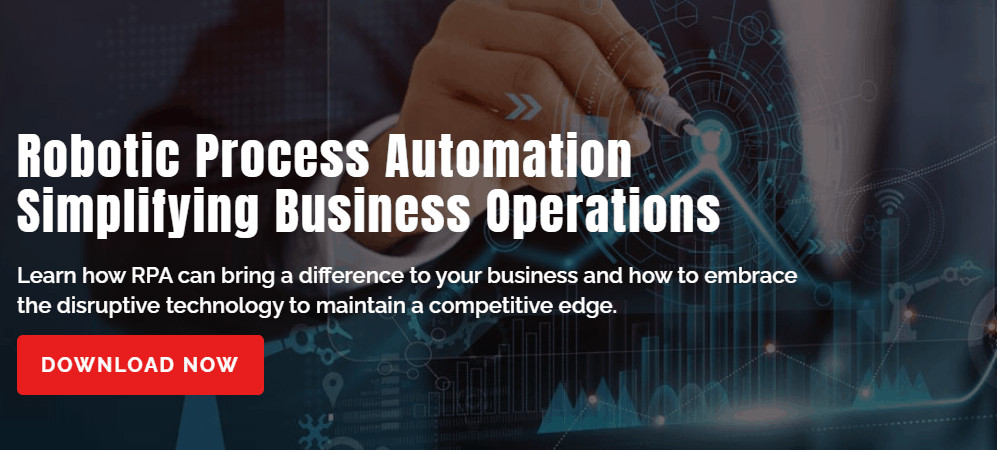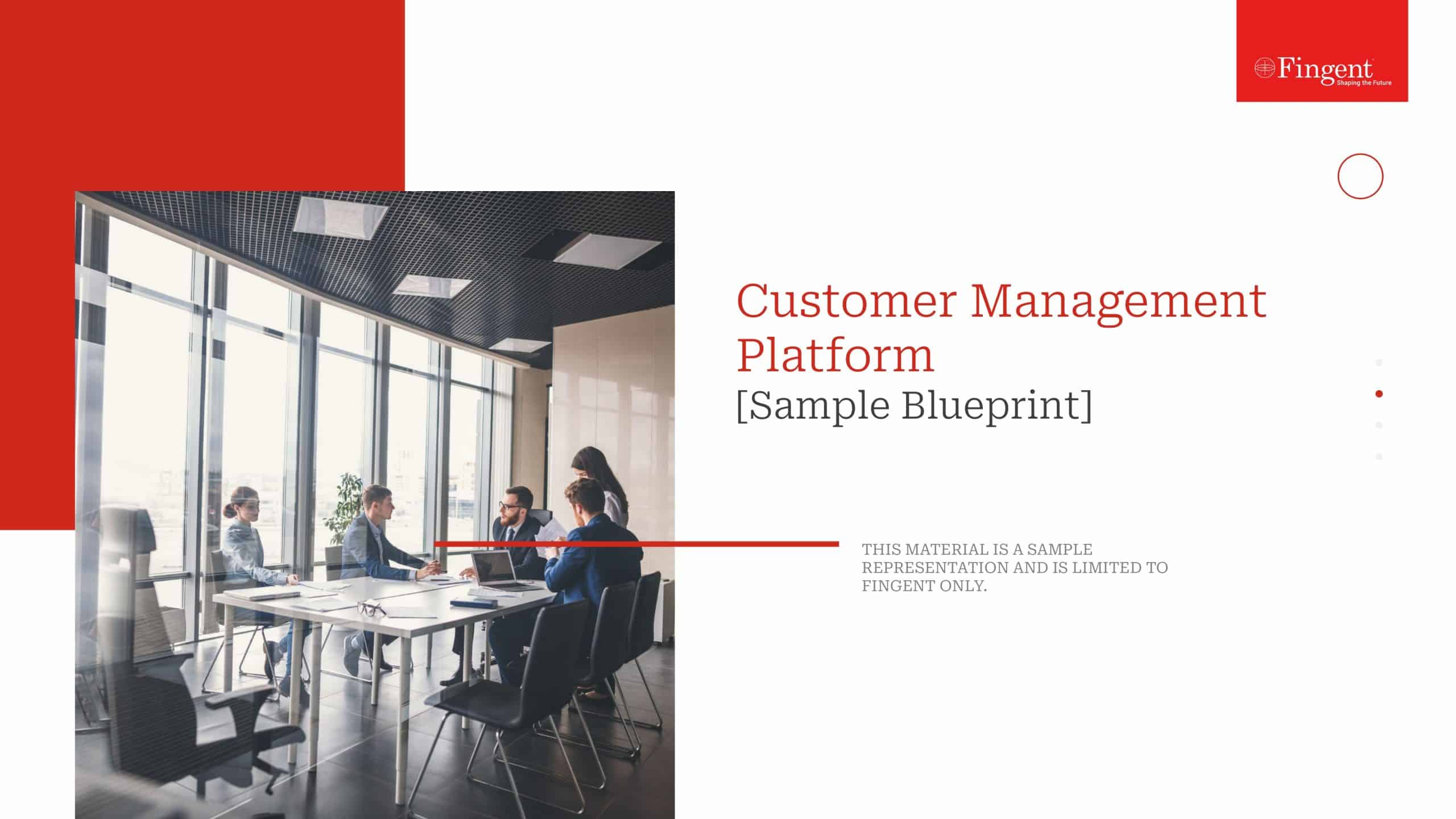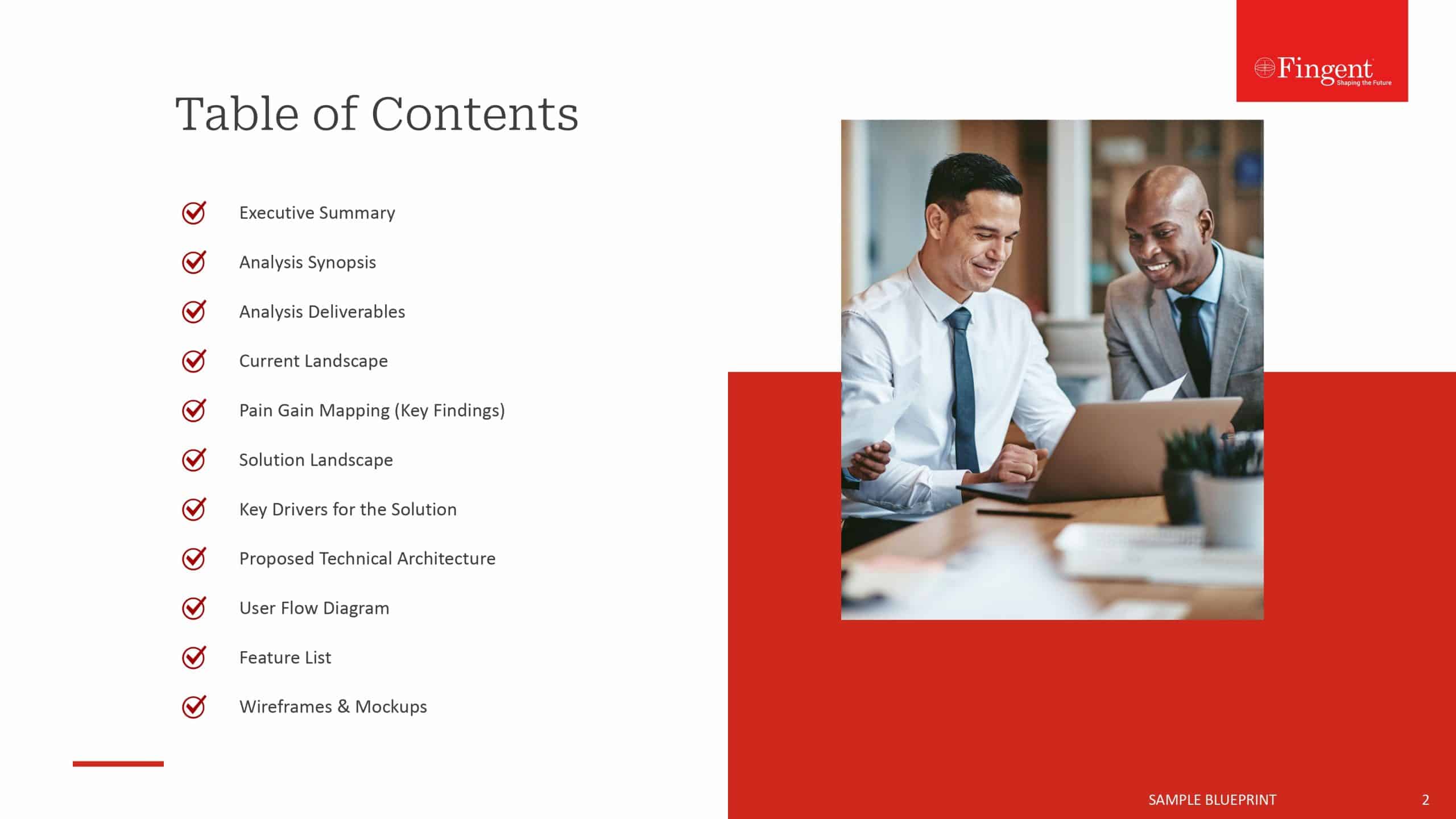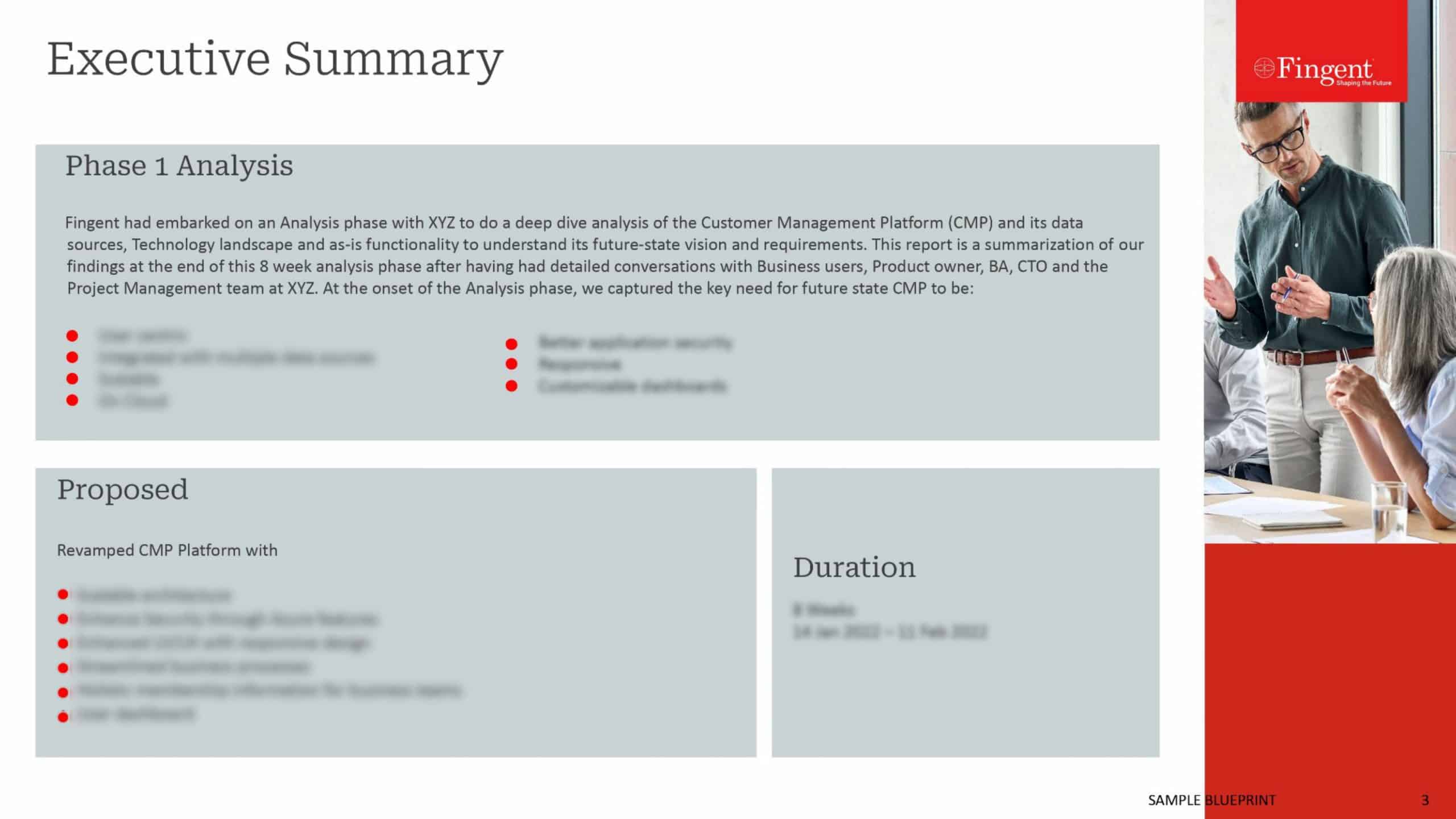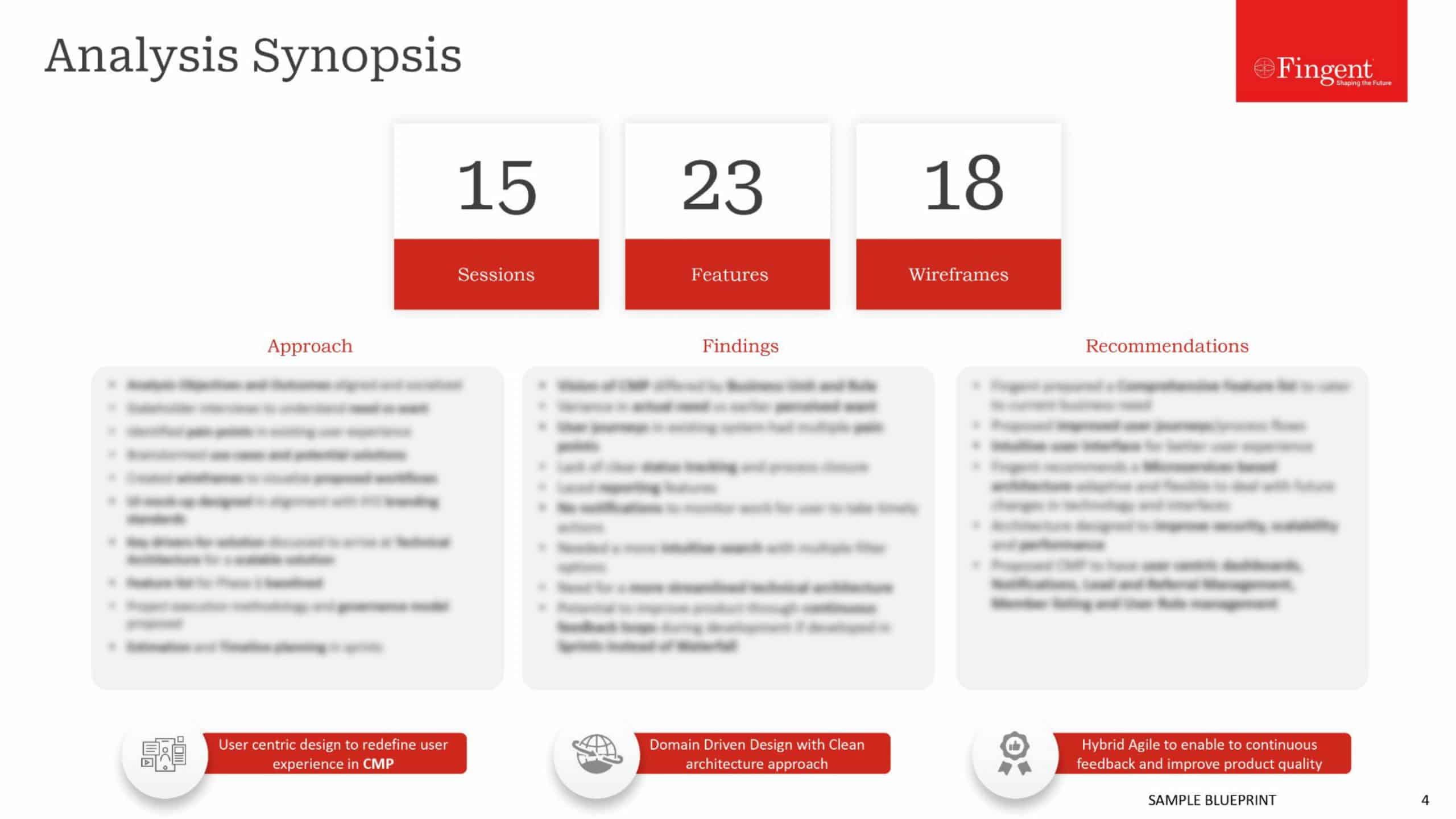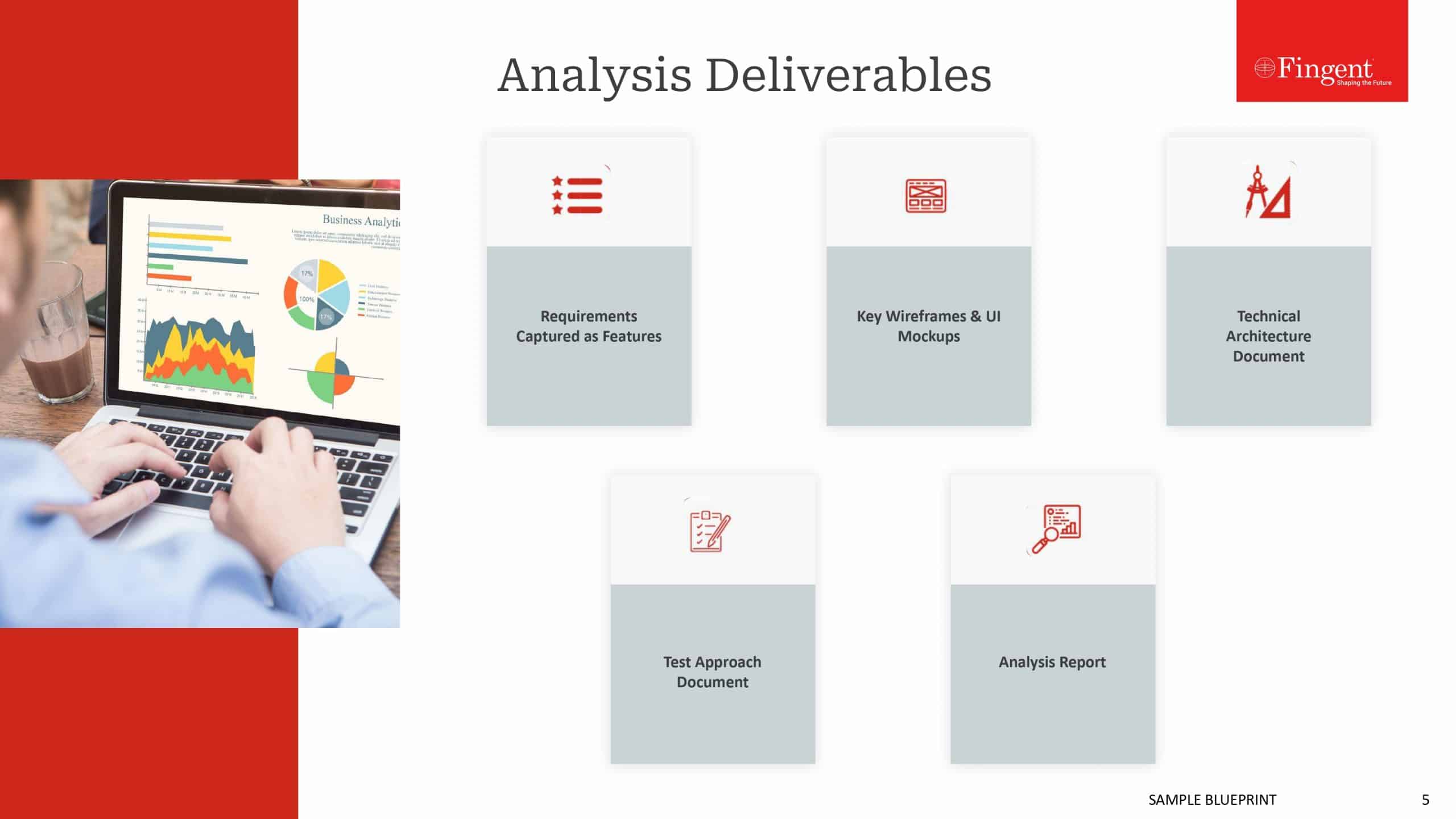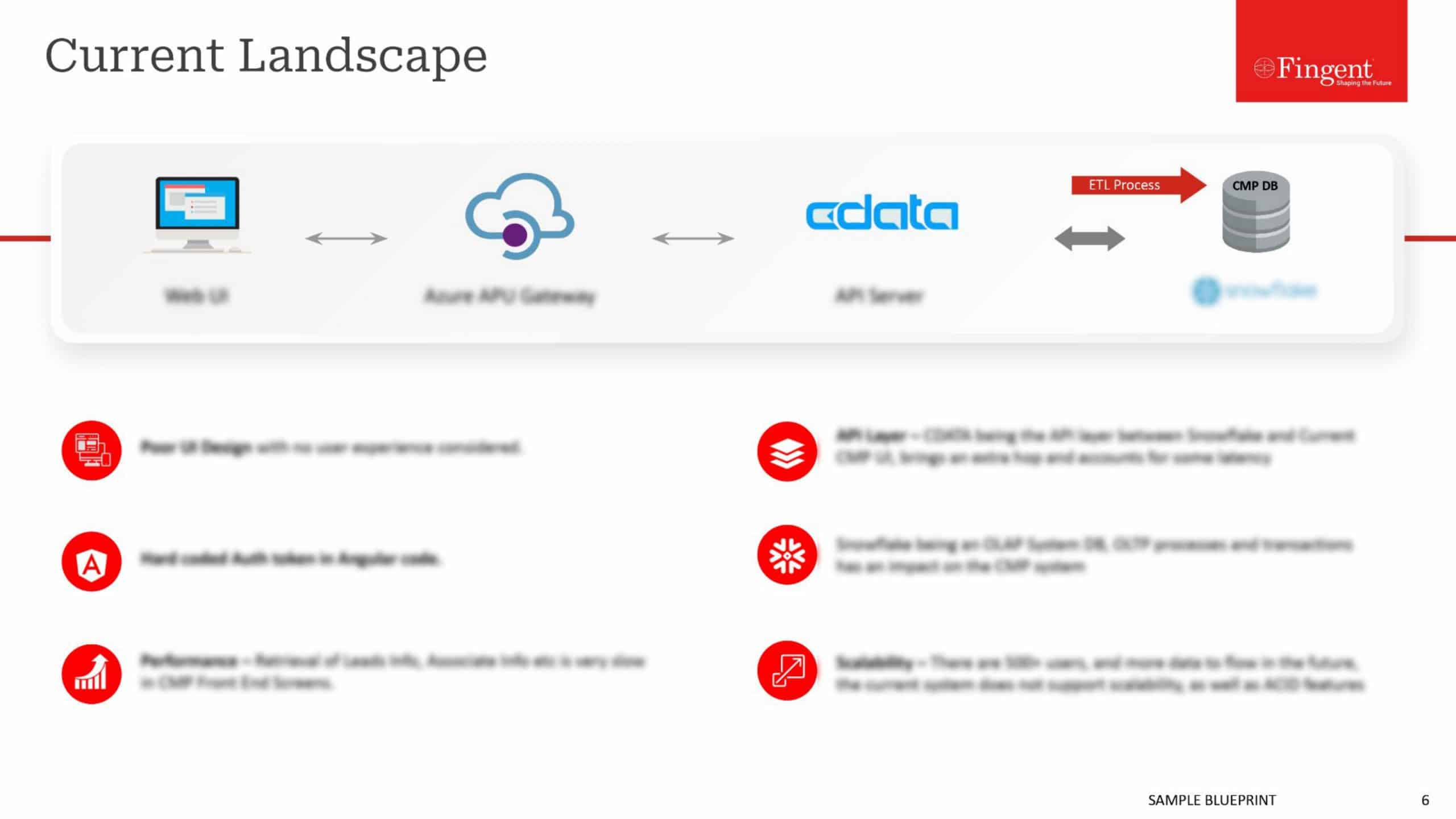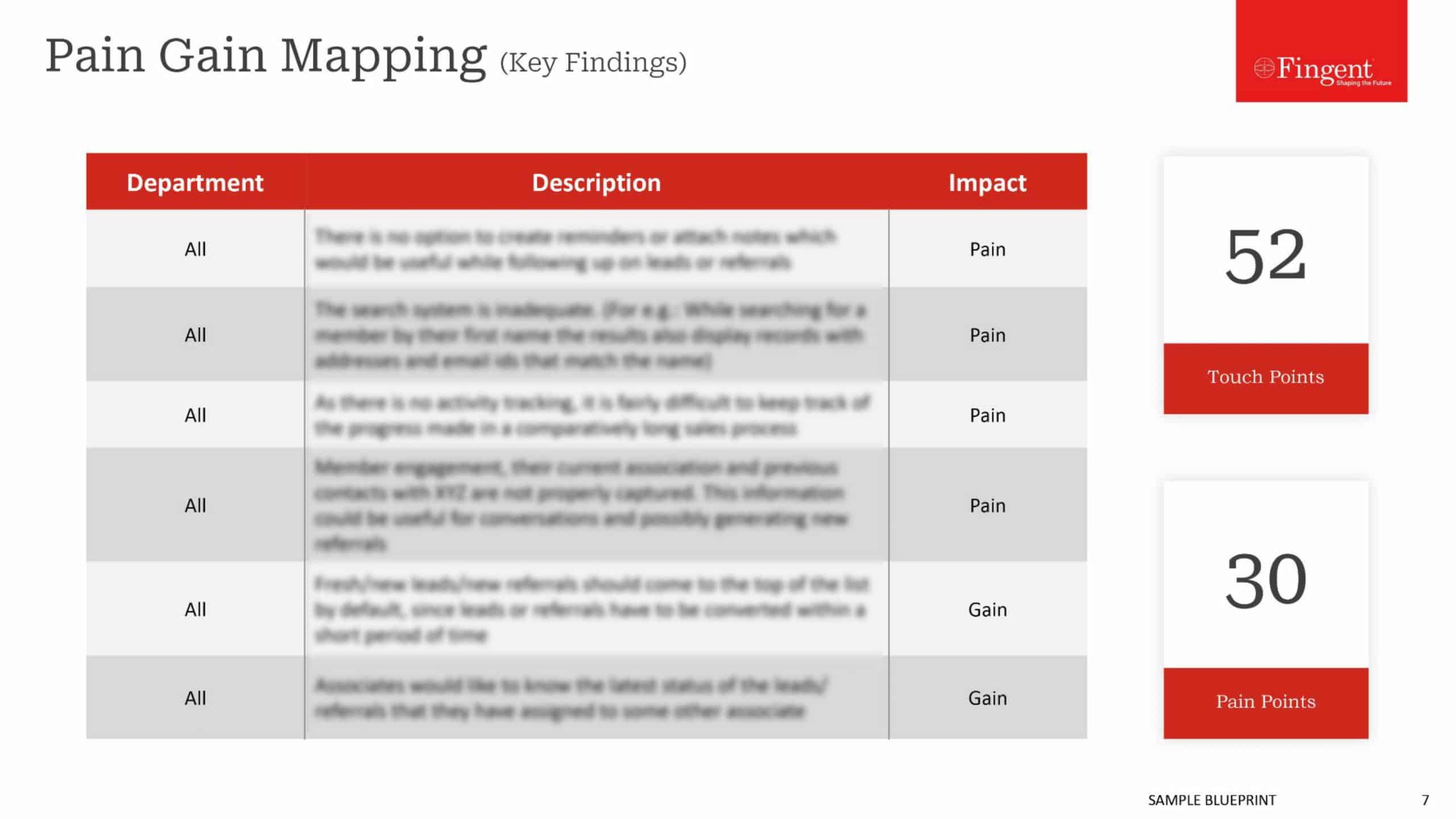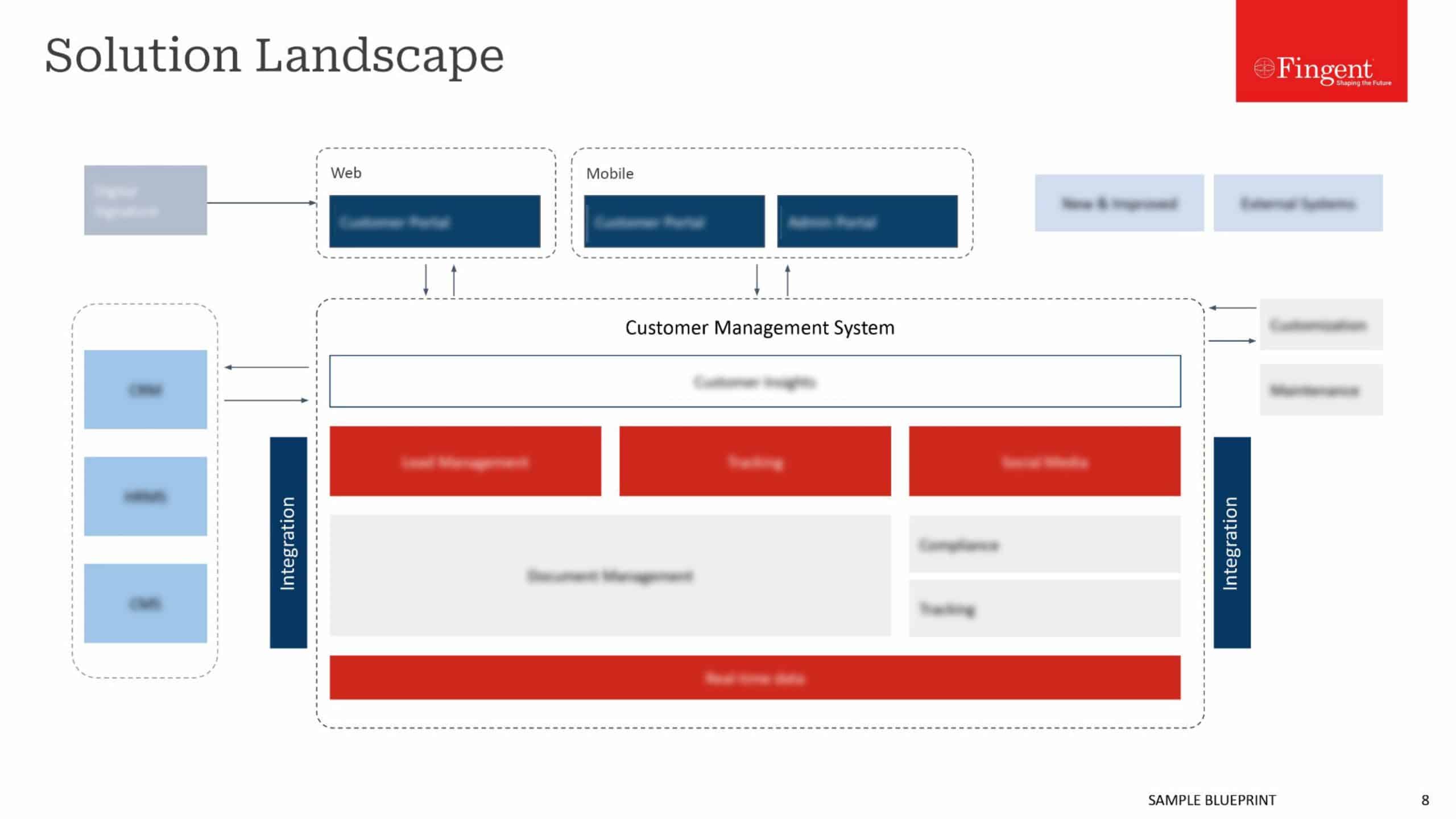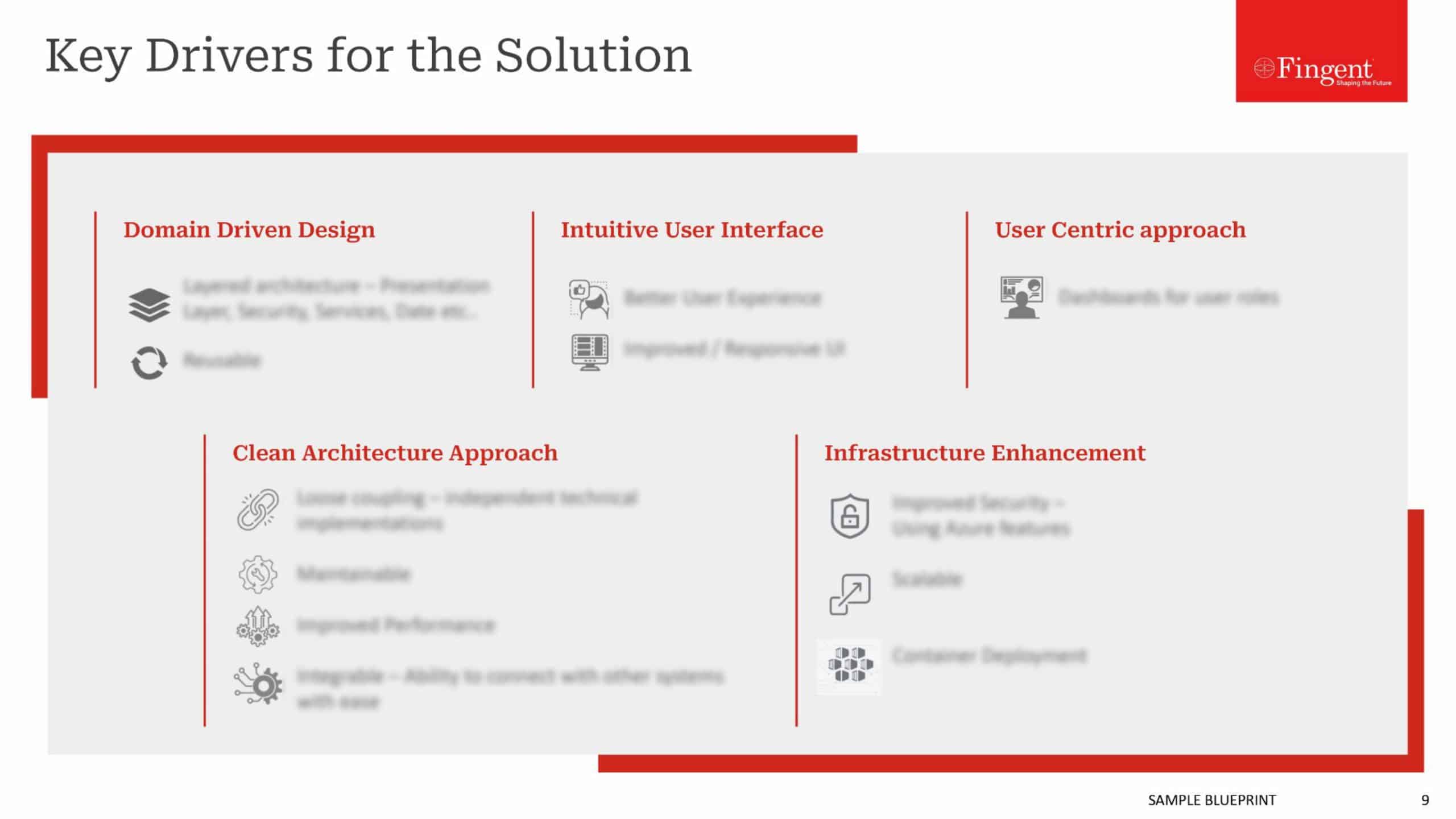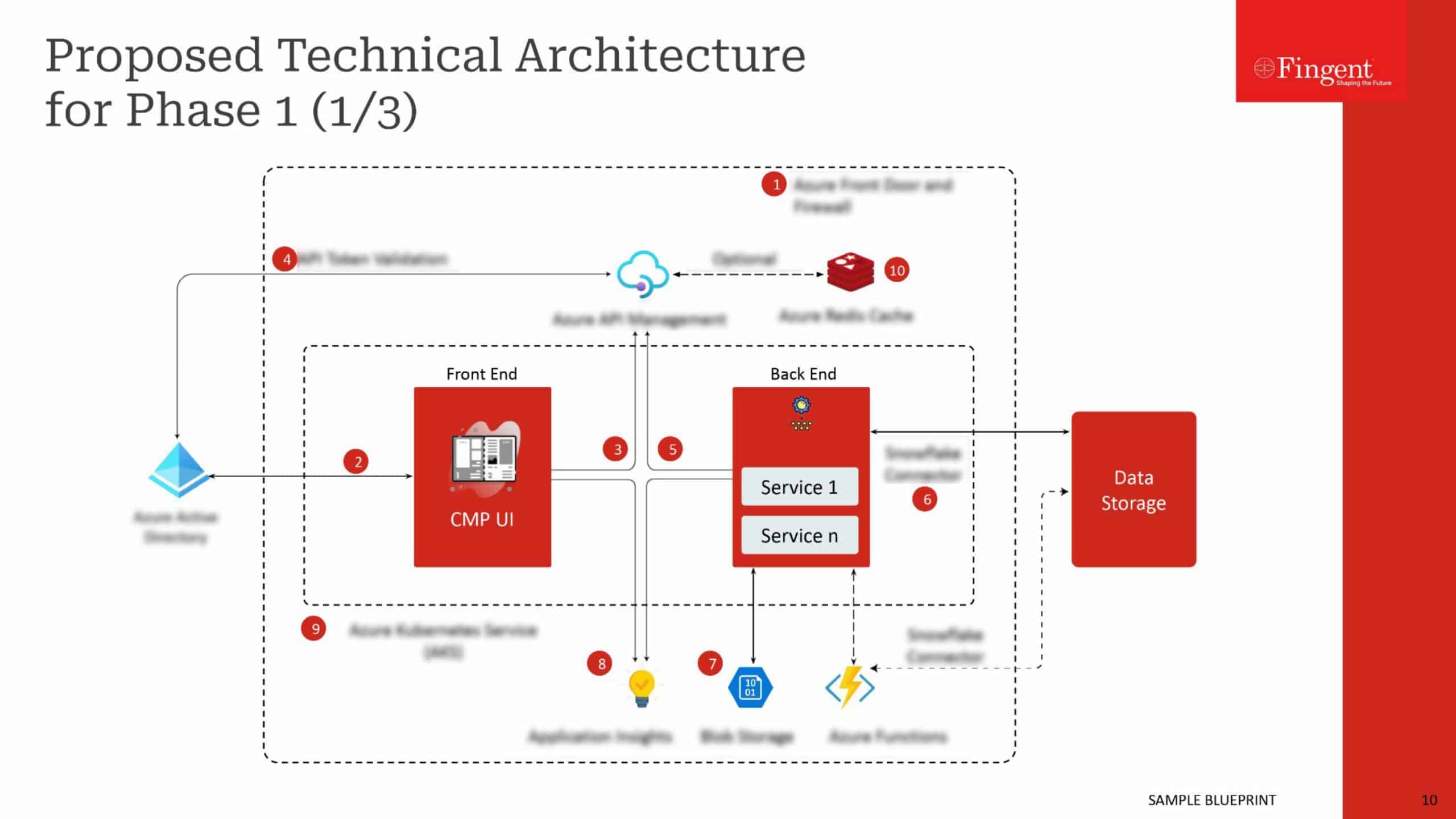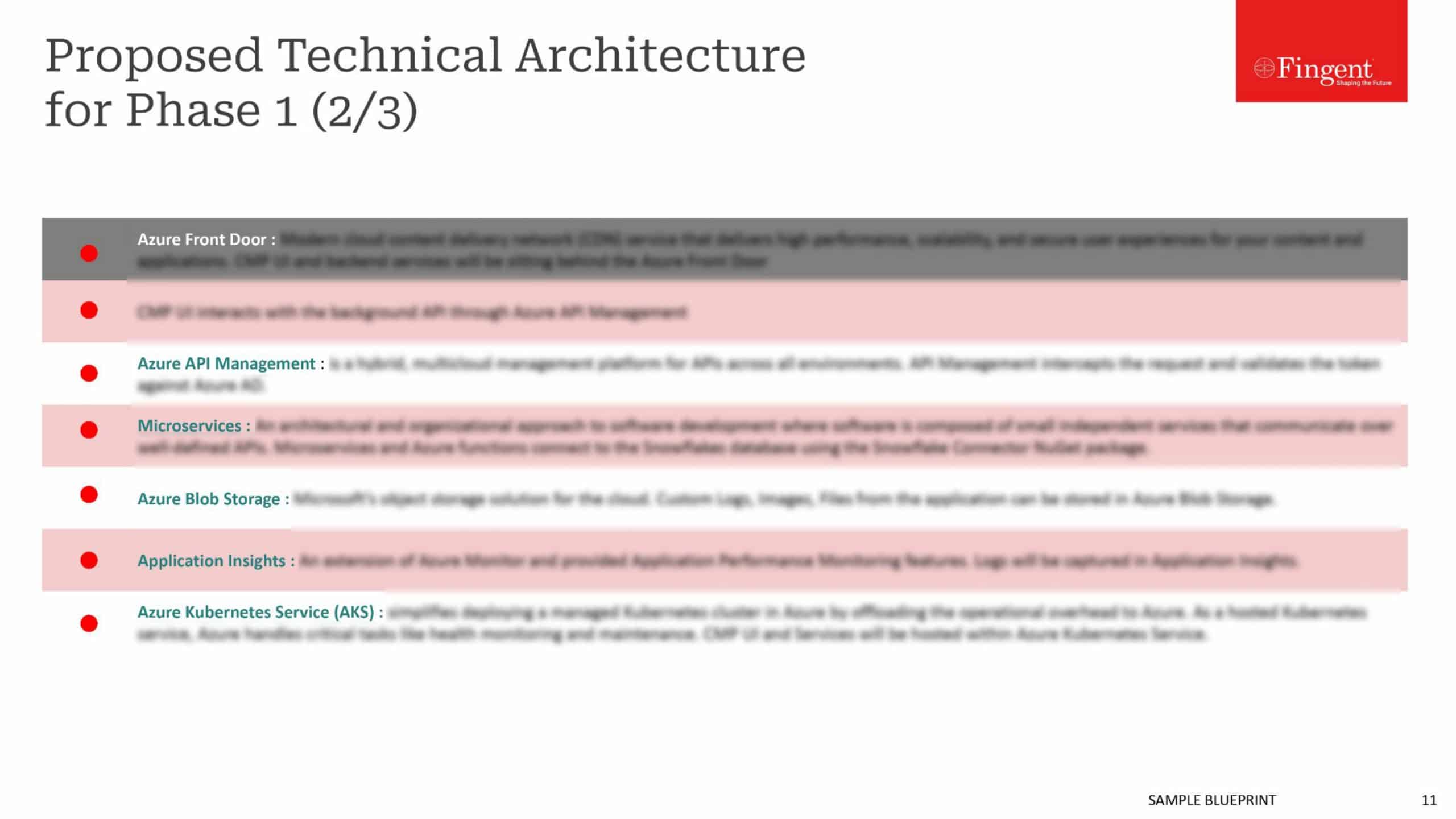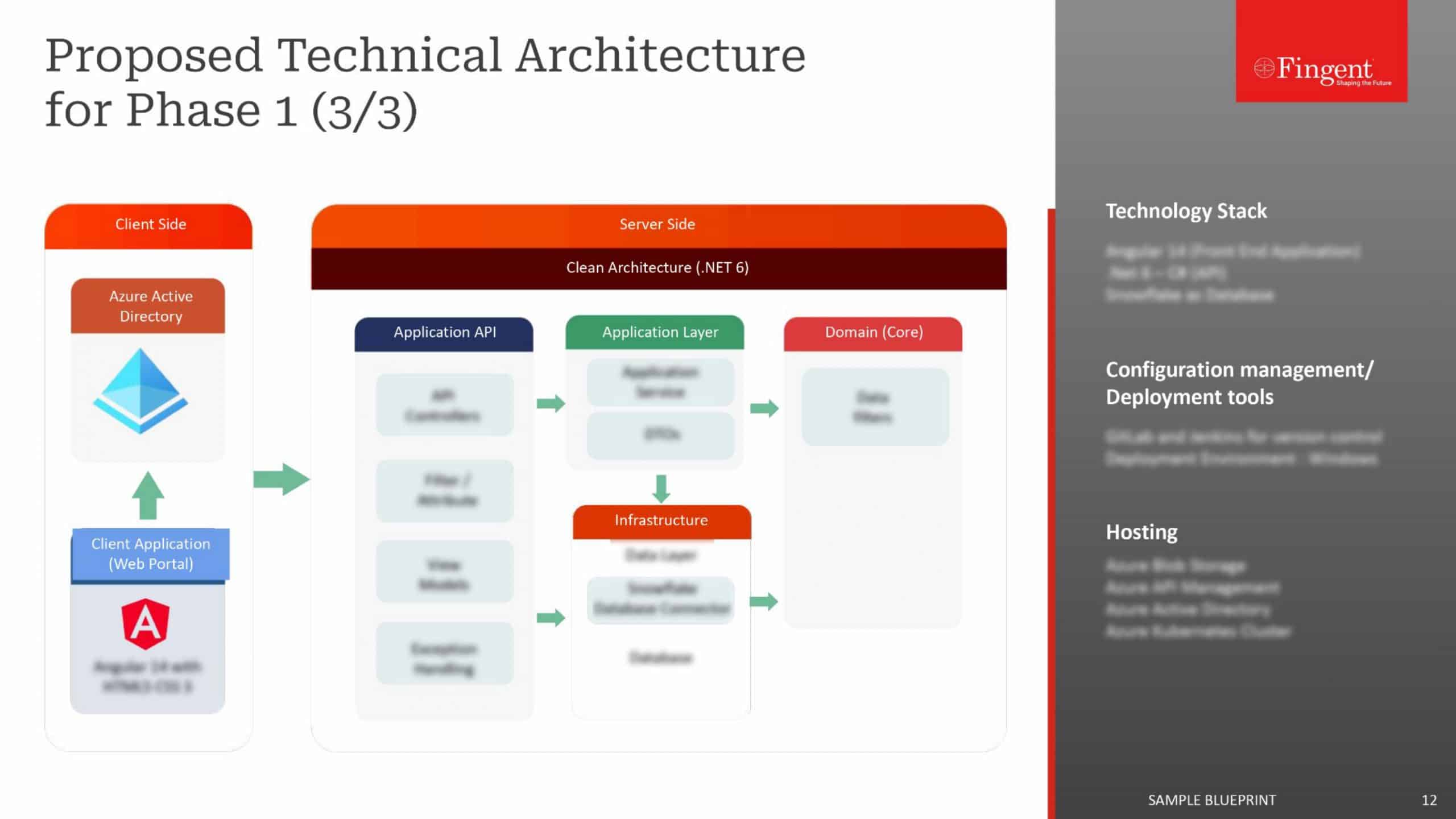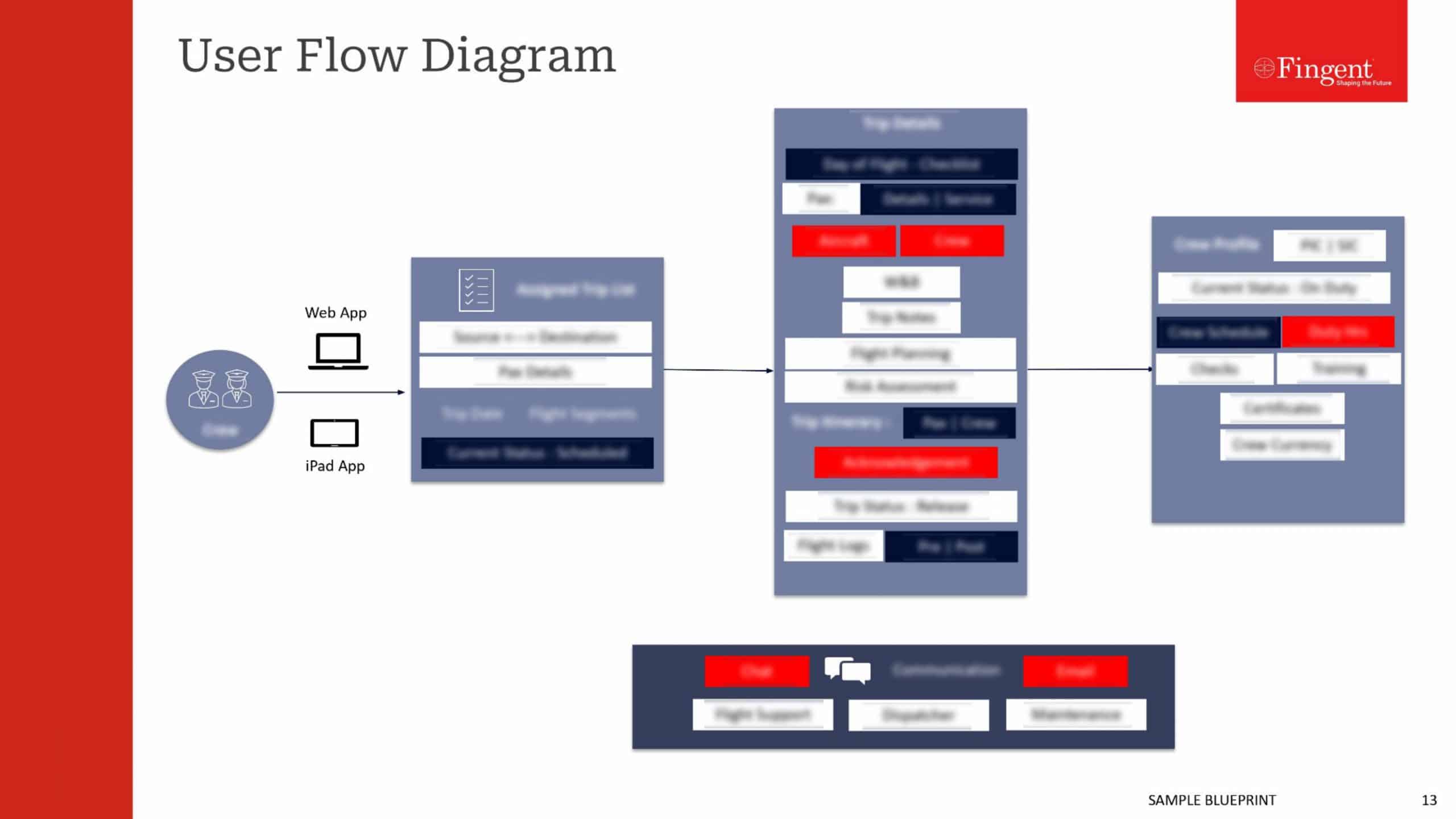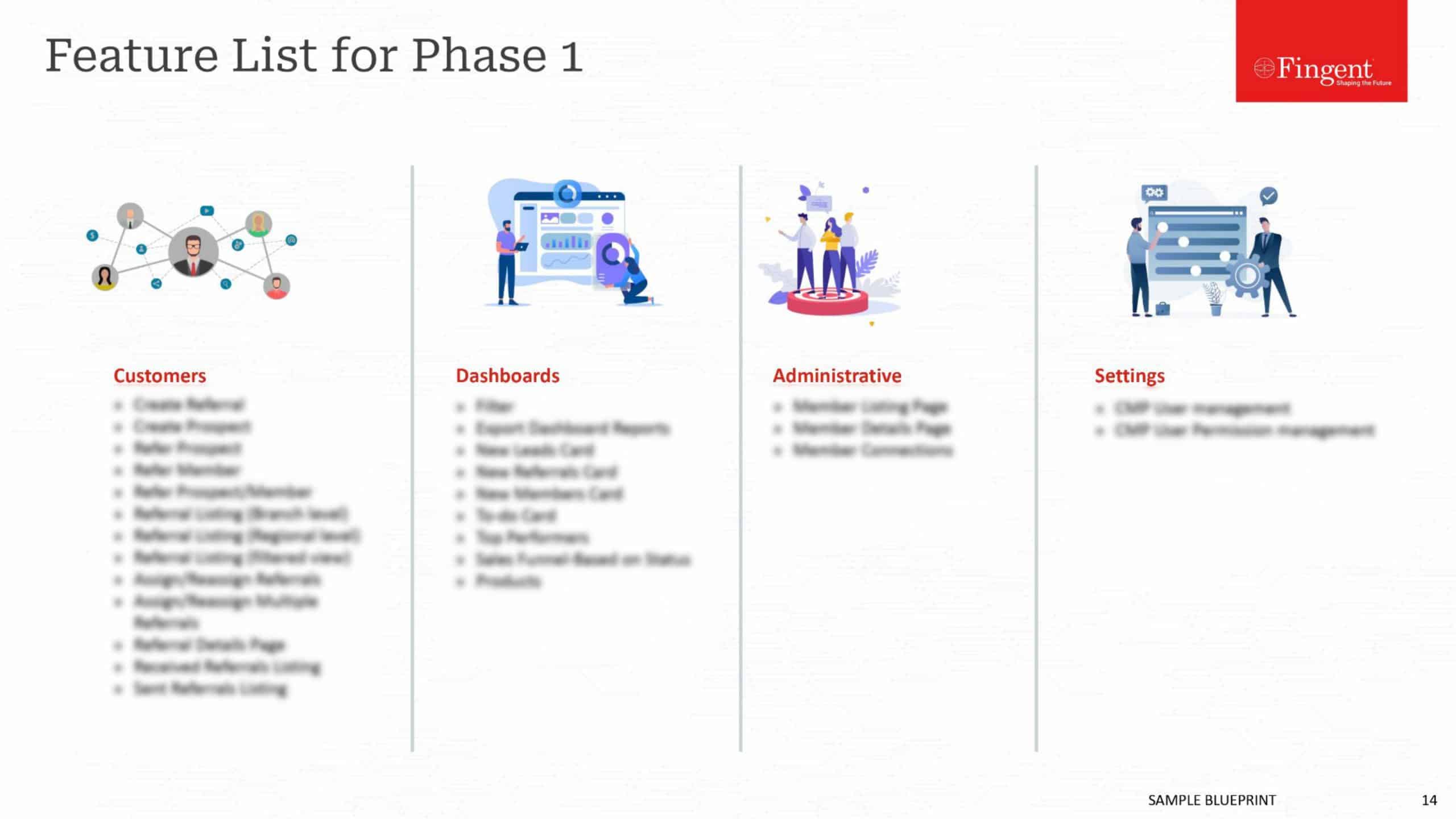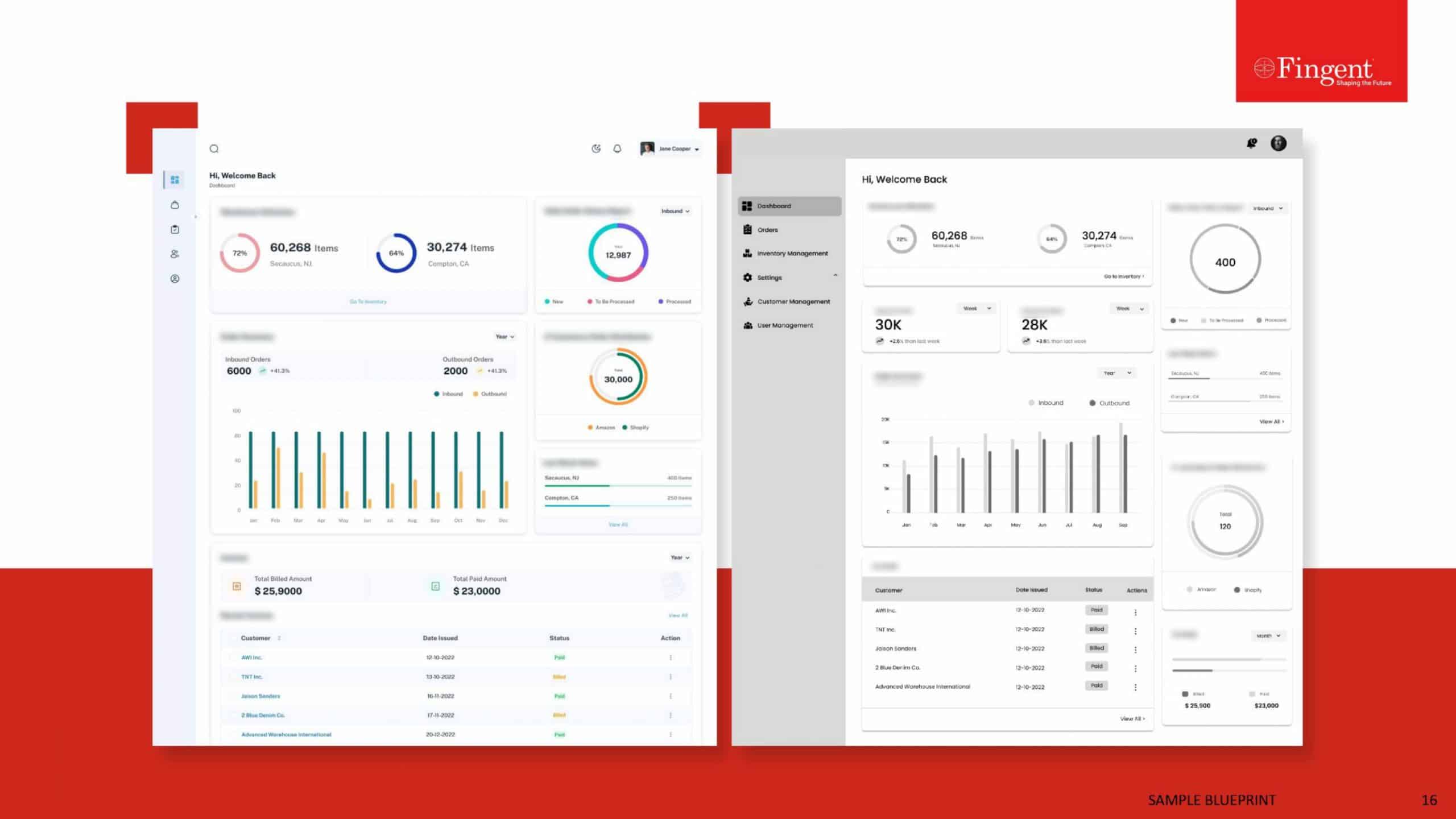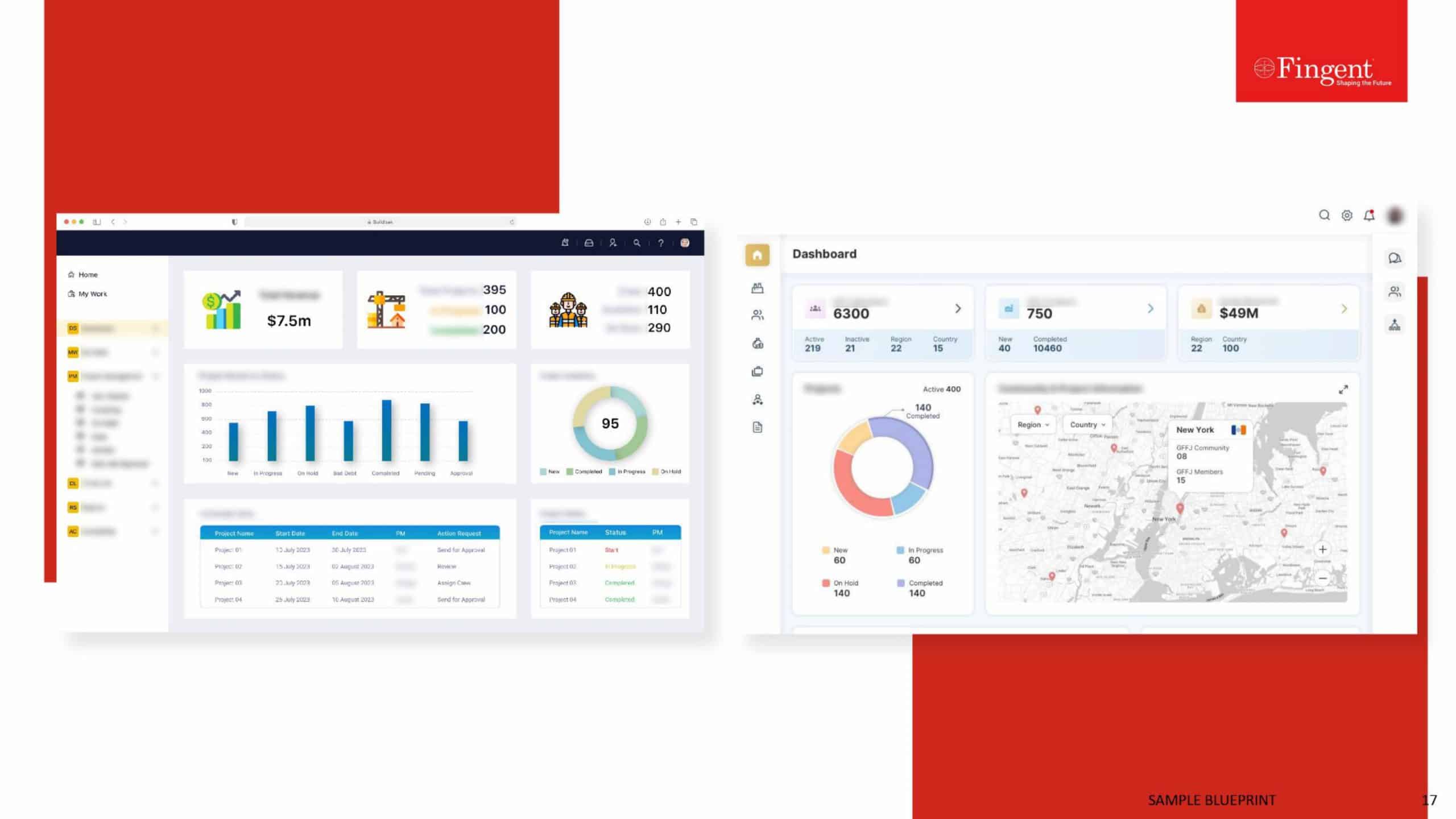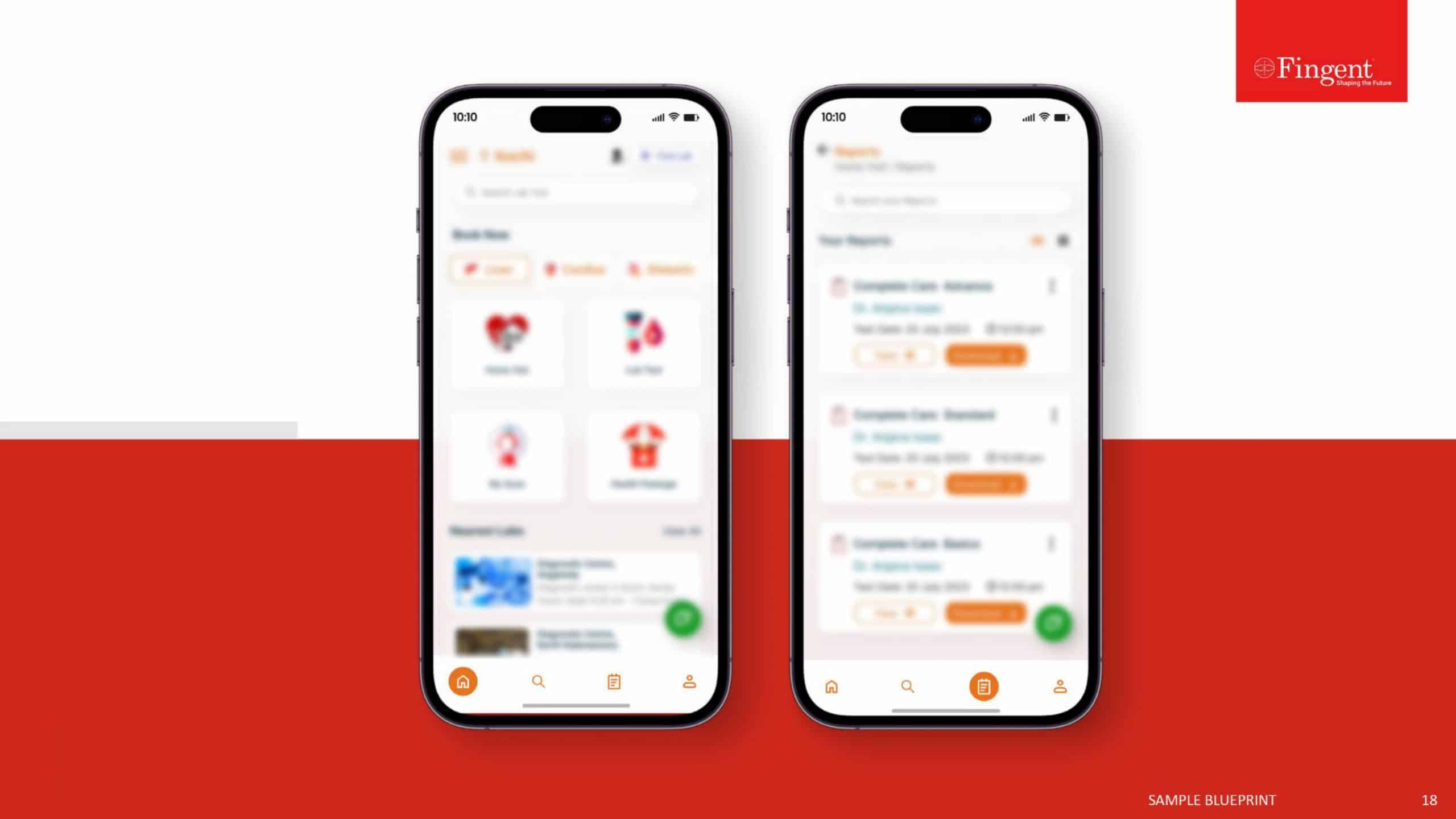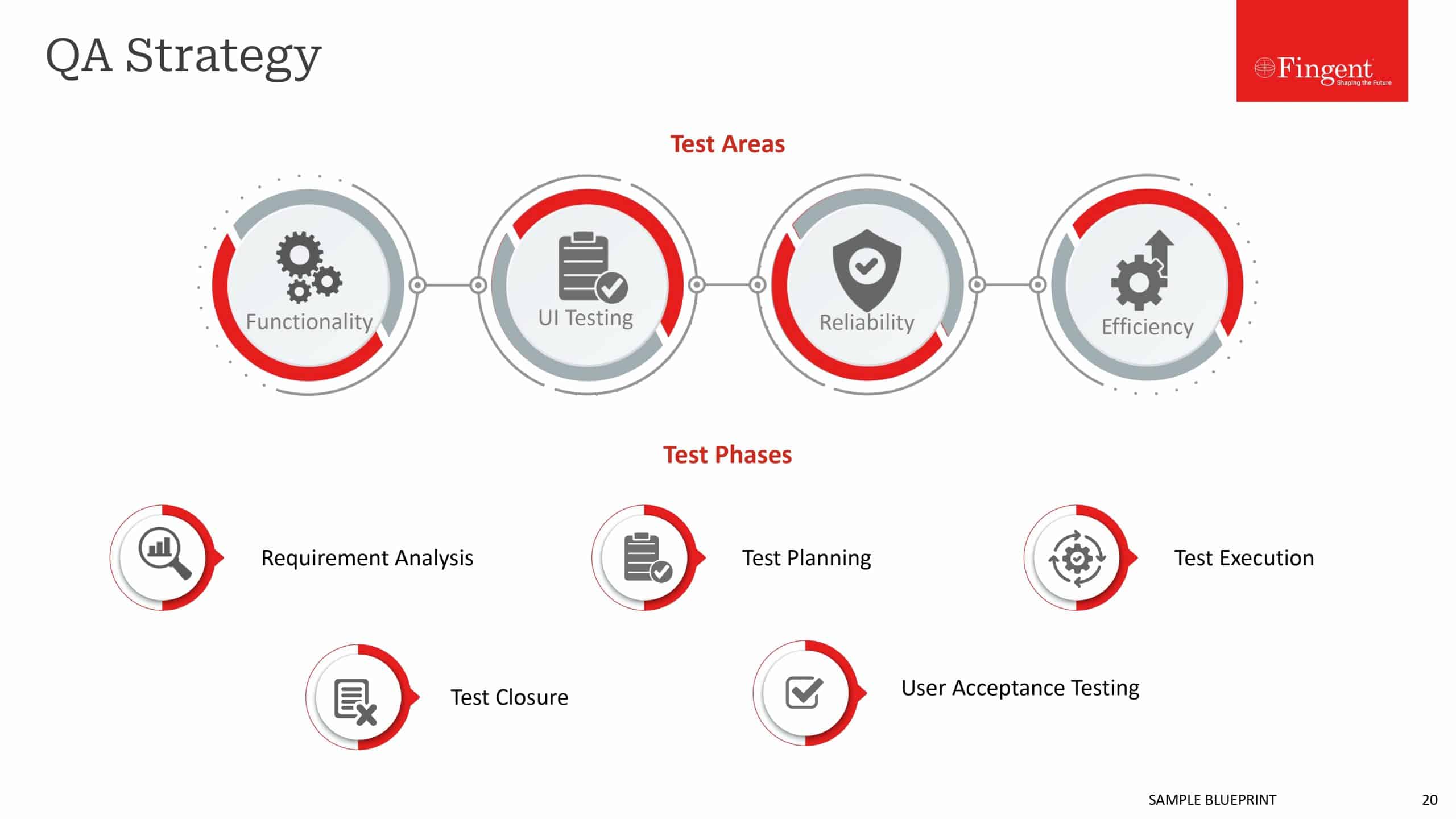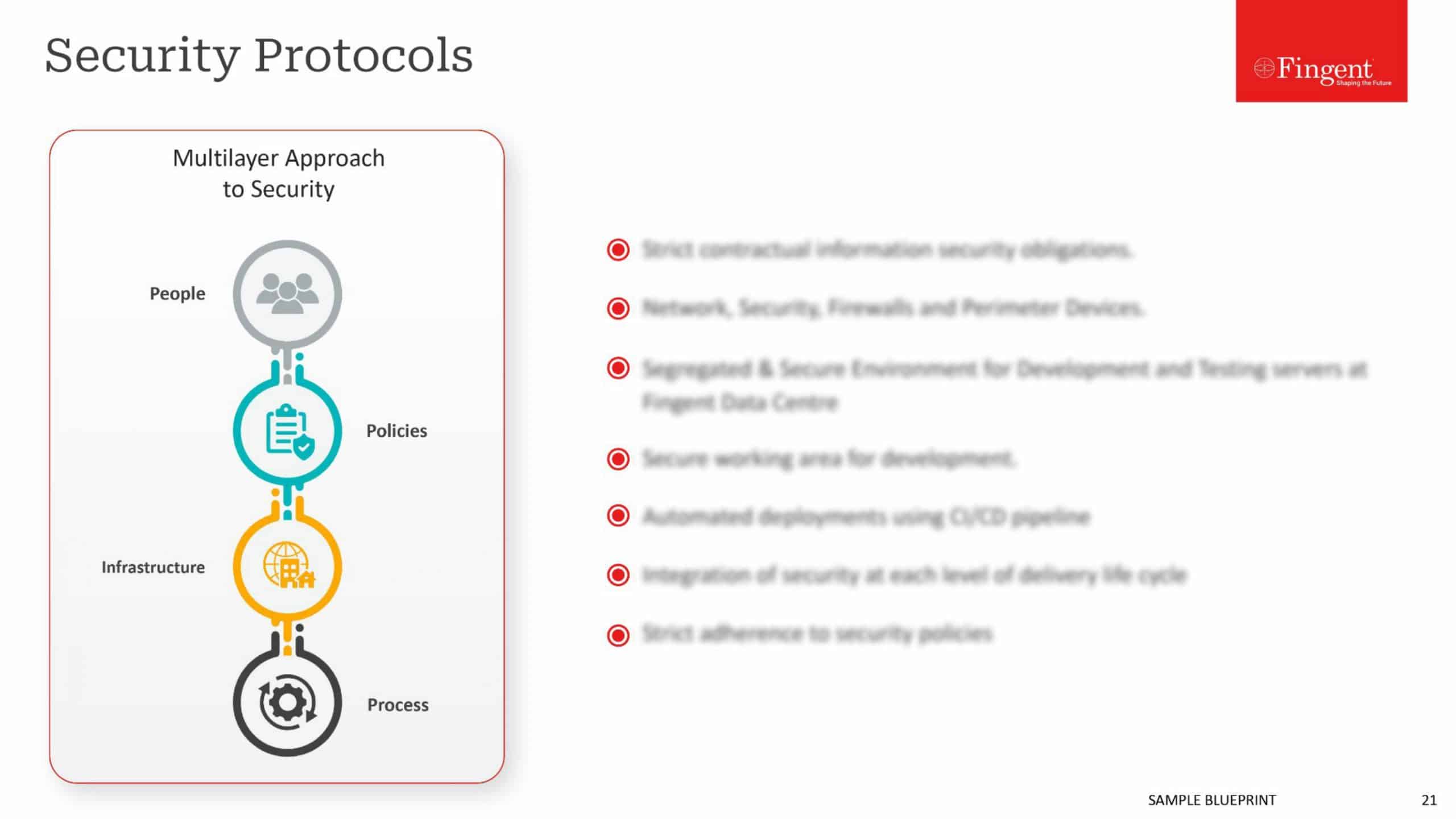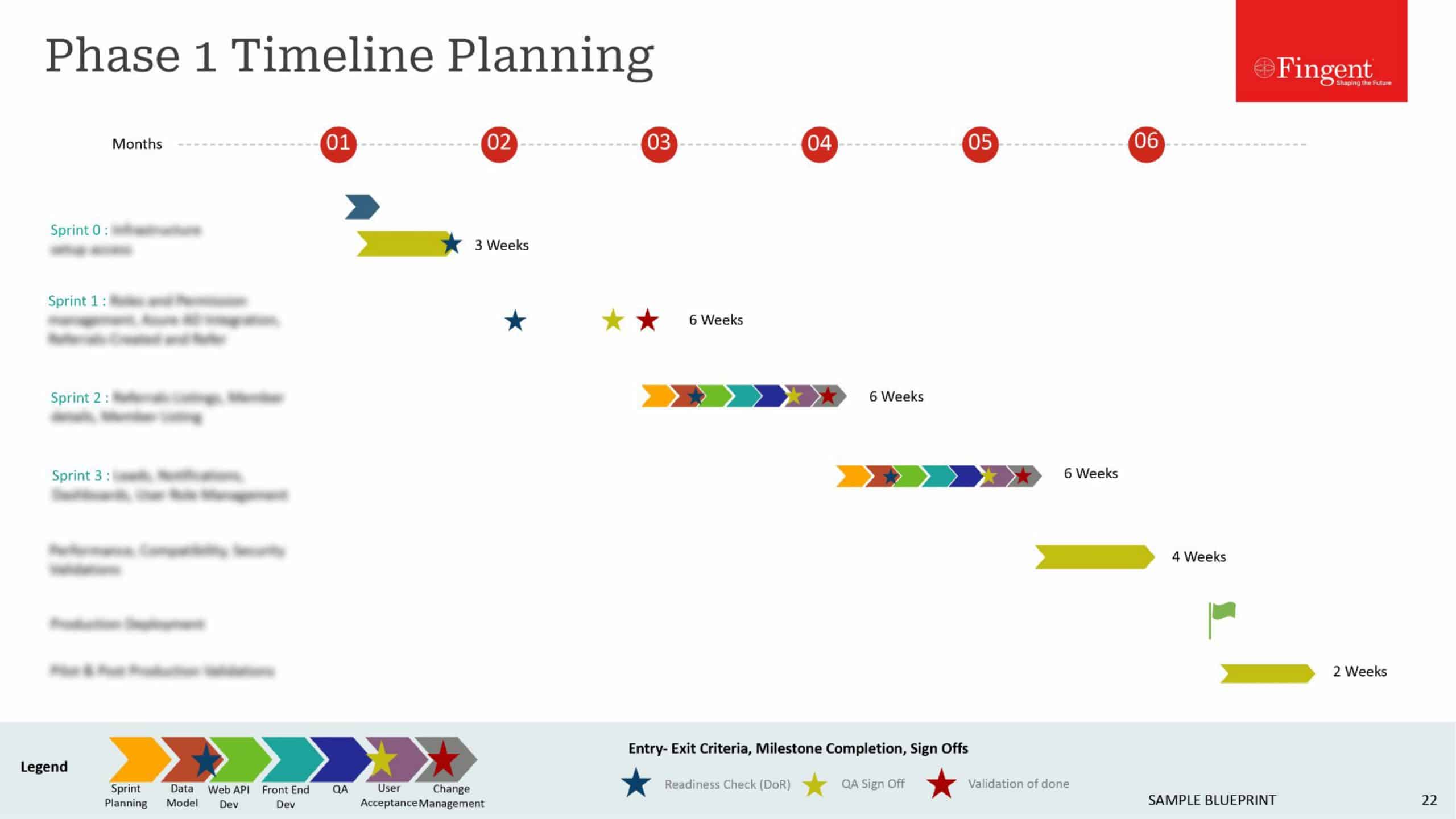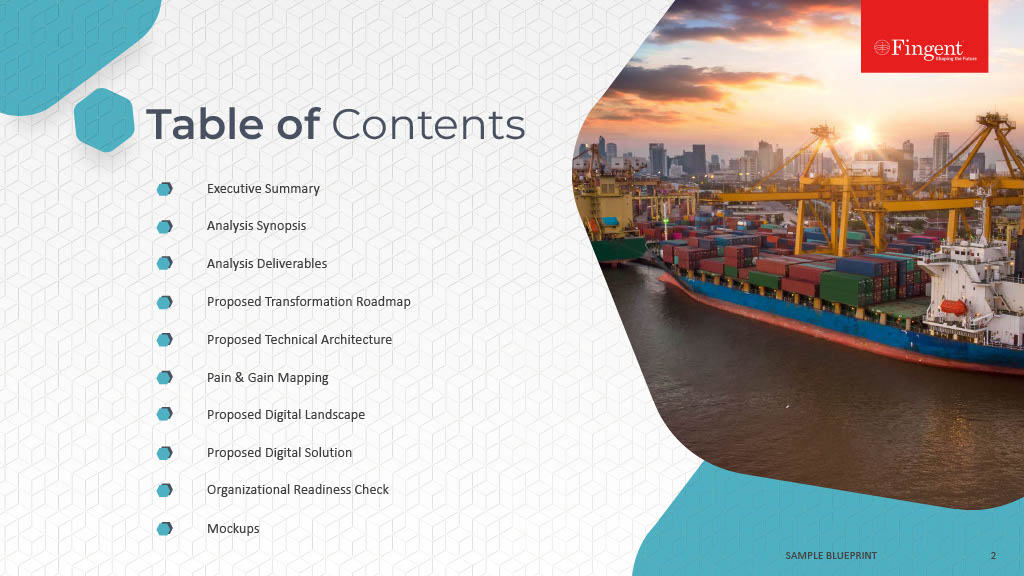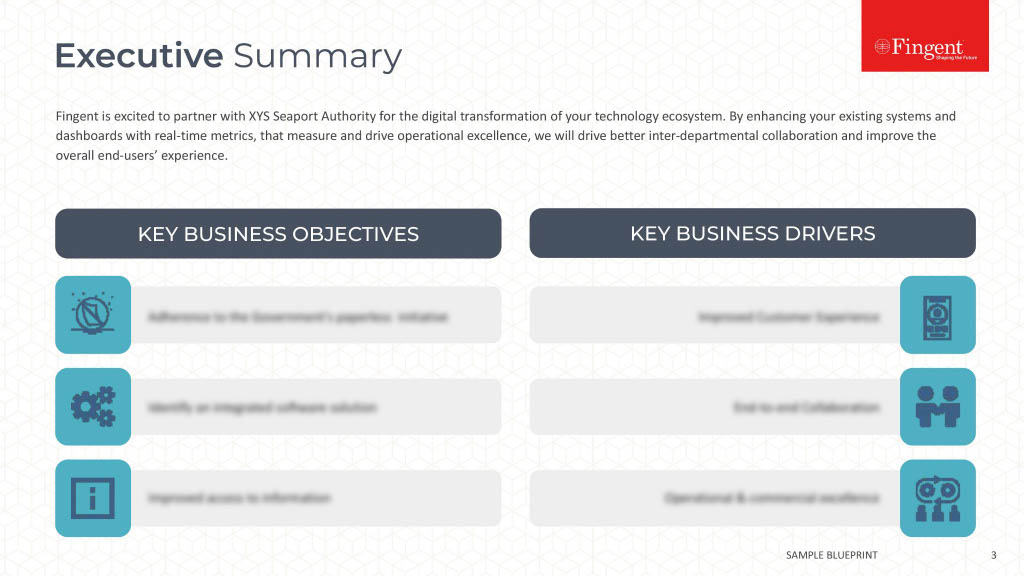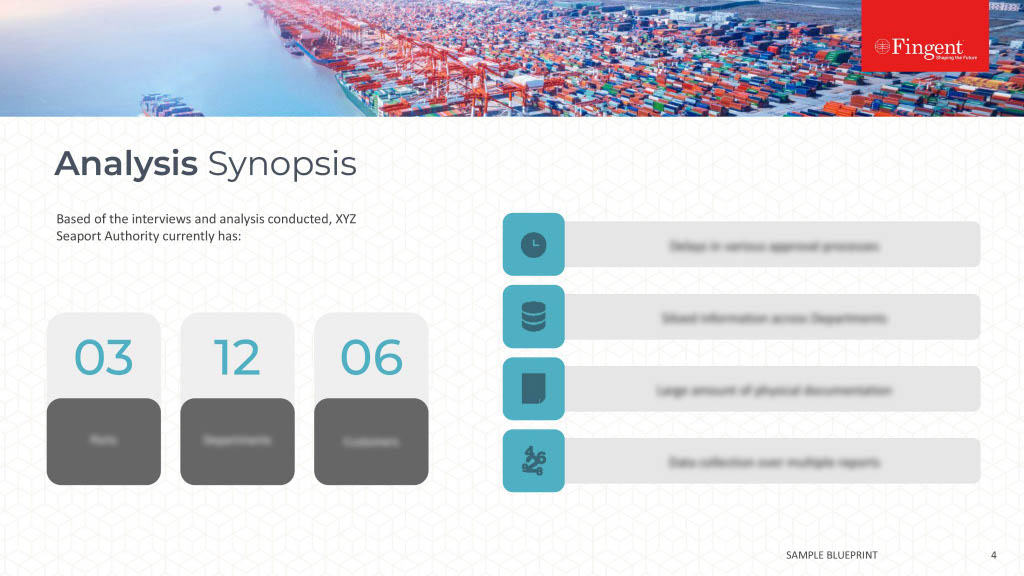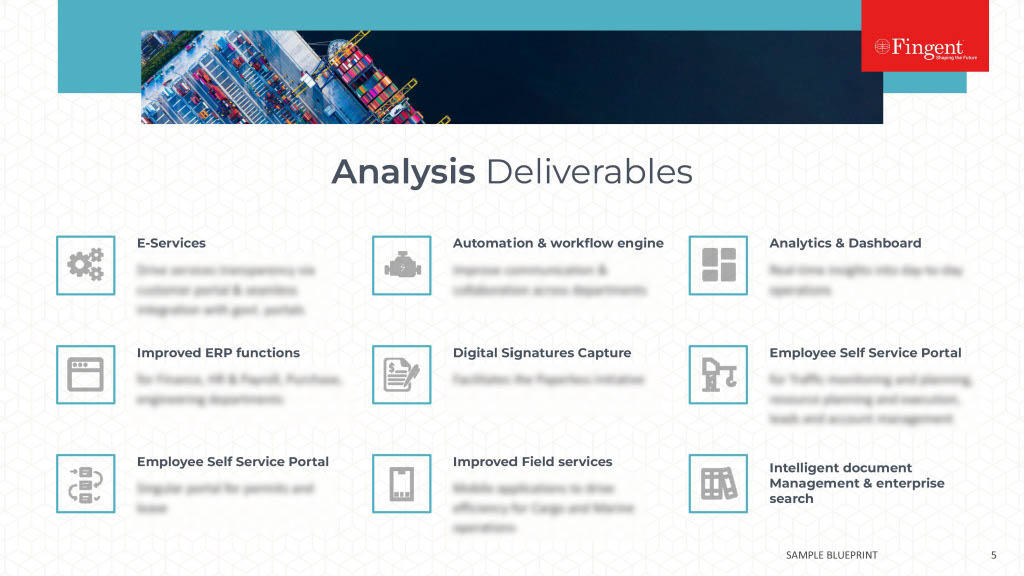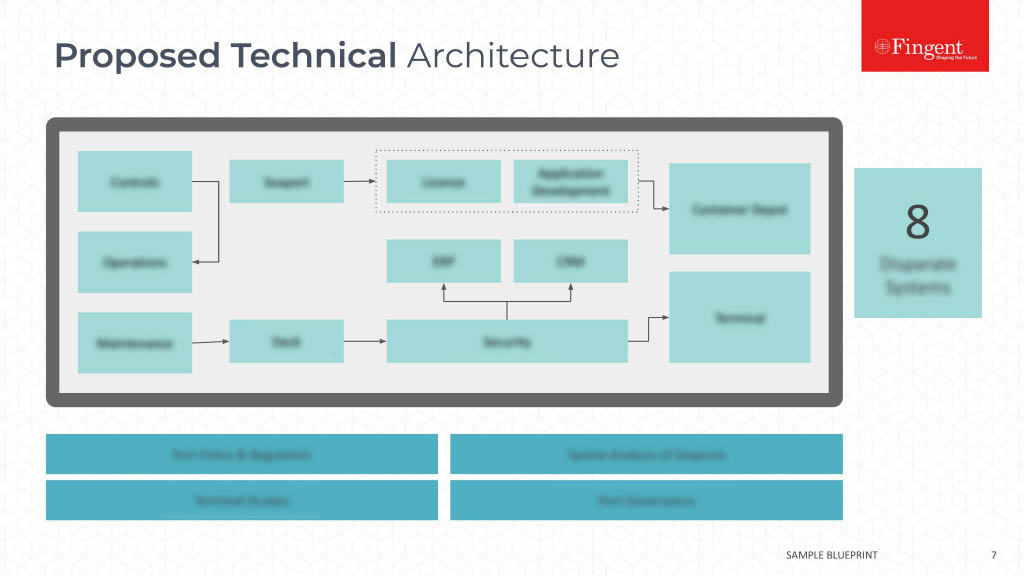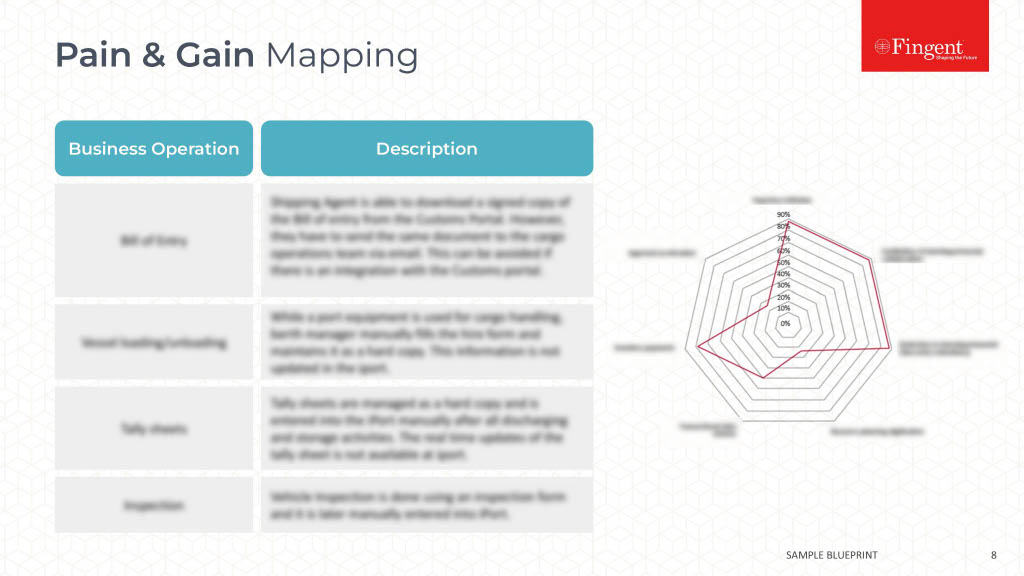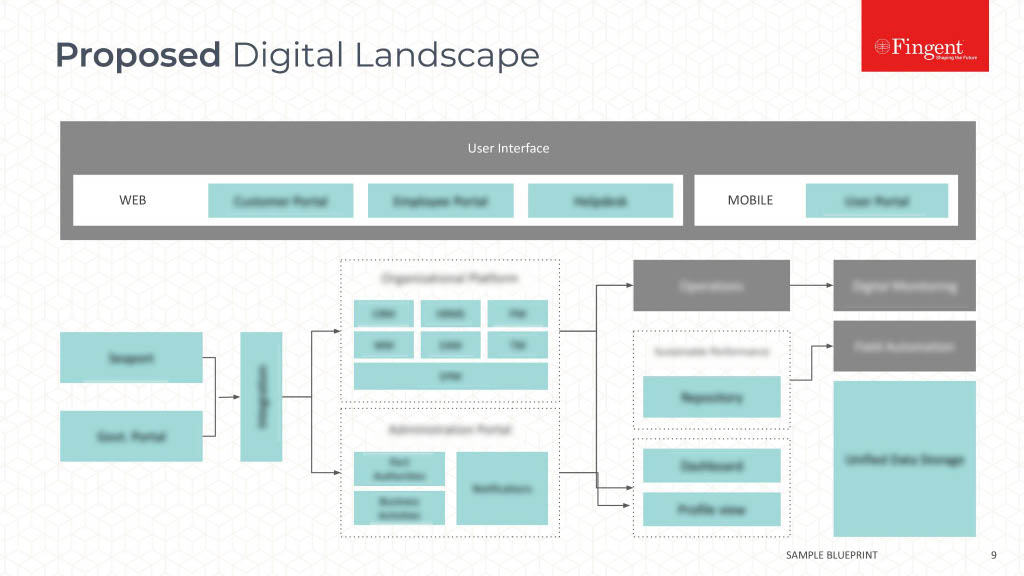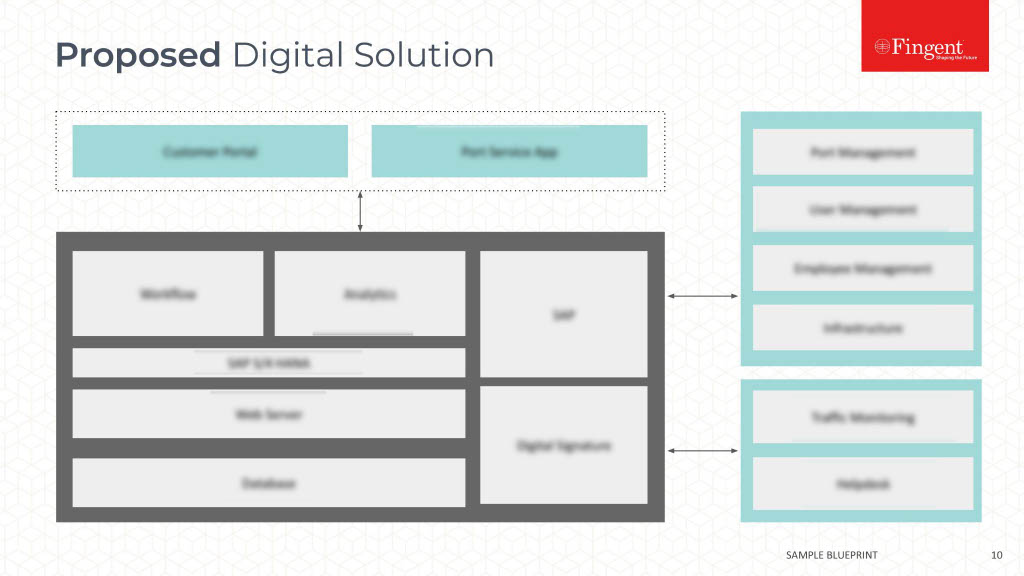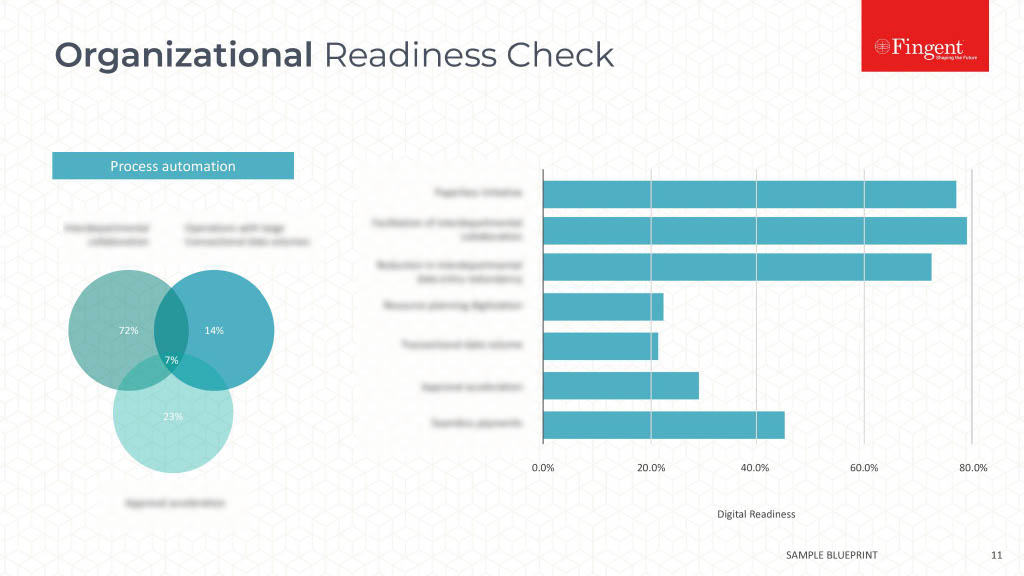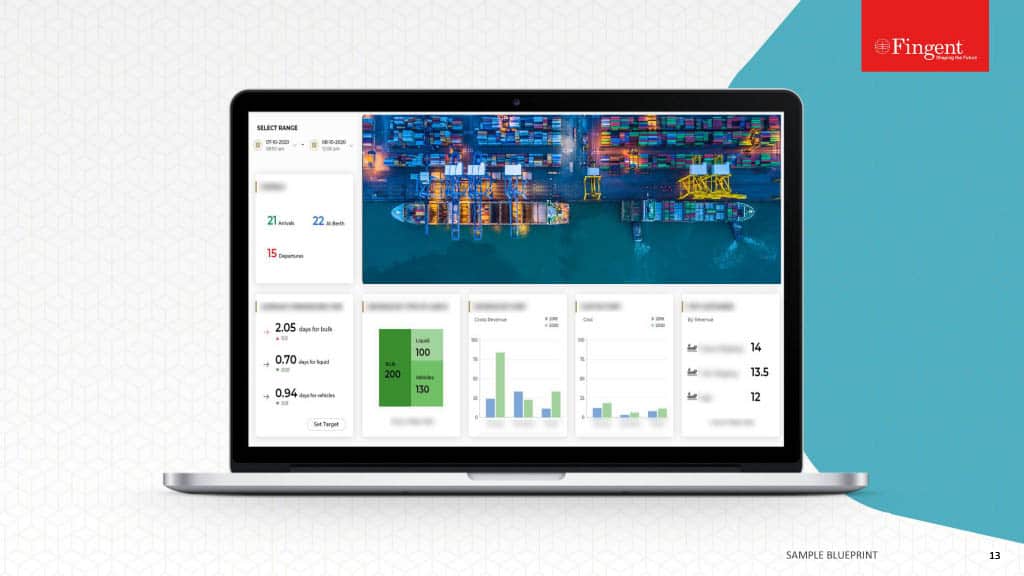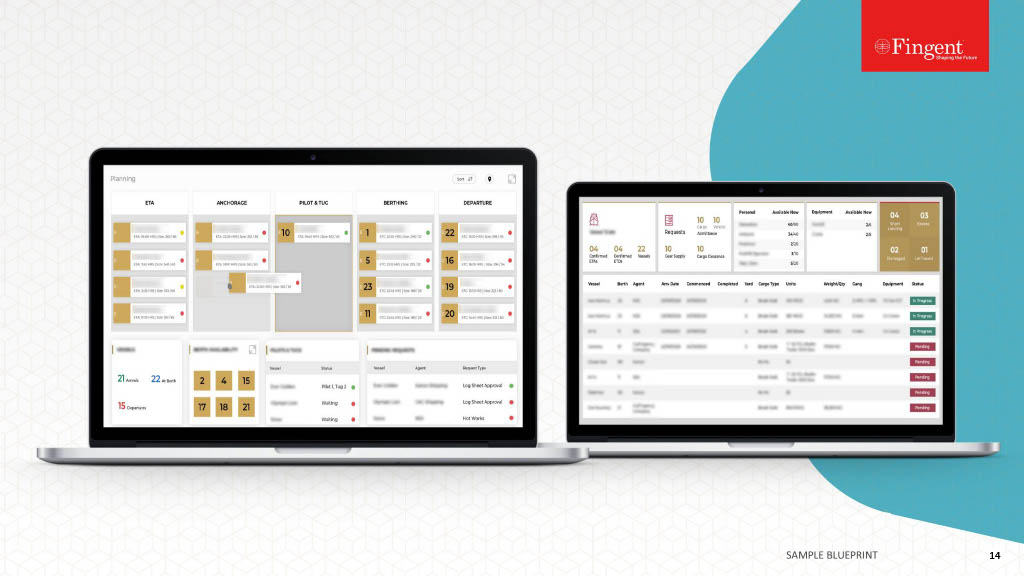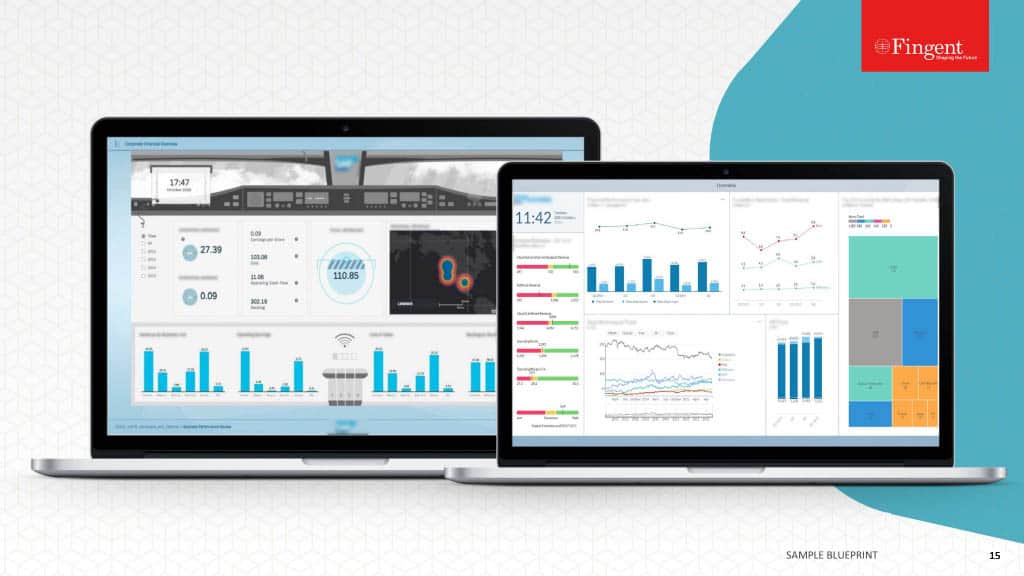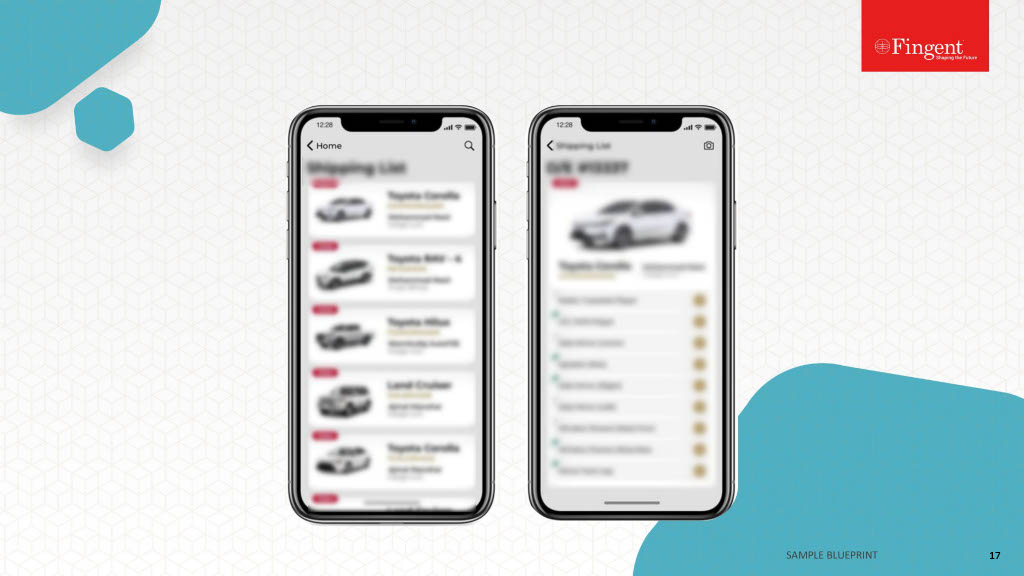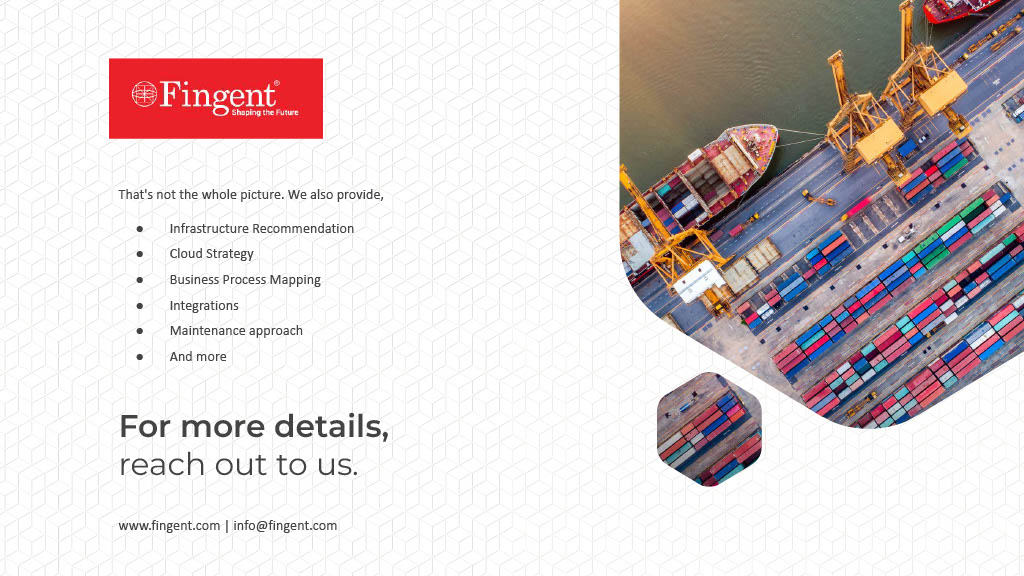Category: Digital Transformation
Fingent Tops Among The Global B2B Companies Listed By Clutch
We can expect software development to go to new and exciting places in 2020. At Fingent, we couldn’t be more proud of what we’ve accomplished this year and look forward to what’s to come. We are thrilled to announce that Fingent has been included in the Clutch 1000, a list of the 1,000 top global leaders on Clutch!
We are ranked #5 on the Clutch 1000, which puts us in the top 1% of the over 160,000 companies on their site! We are also one of over 140 custom software development companies on the list, as well as the only company based in White Plains, New York.

Clutch is a Washington, DC-based B2B ratings and reviews platform. Their team of independent analysts conducts interviews with the past clients of service providers. These verified reviews form the basis of the ratings and rankings on their site! Fingent is thankful to all of our past clients who made this award possible by leaving us reviews on Clutch!
“We are thrilled to have been featured among the Clutch Top 1000 Companies by Clutch!” – Varghese Samuel, CEO & MD, Fingent
Looking for more? Clutch has two sister sites, the Manifest and Visual Objects! The Manifest compiles company shortlists based on service lines and geographic location. We are proud to be one of the leading businesses on the Manifest under the software development category! On Visual Objects, users can look through our solution portfolios to find the best fit for their next project.
We are thankful to all of our clients who have allowed us to be part of their projects! Your success is our success. Looking to start a new project? Get in touch with us today!
Stay up to date on what's new

Featured Blogs
Stay up to date on
what's new



Talk To Our Experts
Address Your Parking Woes With Intelligent Parking Management
Many of you might have experienced the frustration of finding a spot to park your vehicle while going for shopping in the crowded shopping plazas. In today’s rapidly growing urban centers, the first touchpoint for a business to focus on is to eliminate the frustration that accompanies the search for a parking space. The objective of this blog is to help businesses enhance their customer experience with an intelligent parking system.
How Crucial is Parking Space in Enhancing Customer Experience?
Traffic congestion has been a major problem in many cities around the world. As a result, hours are lost in search of a parking space. A commuter in Sydney spends around 156 hours annually trying to find a parking space. This definitely adds to their frustration and creates a bad experience even before customers have stepped into your store.
One in three customers will walk away from their favorite brand after just one bad experience. Hence, it’s important to ensure that your customers have convenient parking spaces while they visit your store. This can go a long way in mitigating the risk of losing your customers and saving your reputation on social media.
The role of parking facilities in a customer’s decision to visit your store is emphasized in the Google Reviews feature as well, where visitors are prompted to mention if the store has parking facilities or not. Parking is, therefore, an important aspect of your customer experience.
Read More: Ways to Leverage Smart IT Solutions for your Retail Business
What is an Intelligent Parking System?
An intelligent parking system uses technology to help drivers find and navigate their way to a parking space quickly and easily. It also helps them find alternative routes when there are traffic congestions. This way, intelligent parking systems offer your customers greater convenience.
An intelligent parking system draws customers to your business by using automated parking systems, mobile apps, and street-side sensors. The advent of smart technology has given rise to complex systems that can integrate with other connected systems. This means that businesses can now have a platform that uses relevant information to improve parking management.
What adds to the appeal of these sophisticated parking management systems is that they are extremely easy to use. They just have to download the application from app store to their smartphones. The intelligent parking management system enables parking operators to maintain real-time information on parking availability in street-parking locations, vertical parking structures, underground parking areas, and more. Your customers can access all of this information through the application on their phones.
Read More: How Connected Transportation Will Disrupt the World
How Does the Parking Management System Work?
A parking management system depends either on vehicle movement detection or vehicle video tracking. This uses technologies based either on sensors or on cameras. Each parking area can be installed with sensors or cameras at the access and exit points. This helps in tracking incoming and outgoing vehicles.
Sensors are being successfully used at a single level, multi-level and even on-street parking spaces. When these sensors are installed at each parking spot, accurate data about specific vacant parking spots can be obtained by the customer that delivers a hassle-free parking experience.
Five Benefits of Intelligent Parking Management
- Reduced stress leads to happy customers: Driving through the same street several times trying to find a parking spot increases stress levels. But with the intelligent parking system, a customer can navigate straight to a vacant parking spot and then into your store.
- Saves customer’s time: Your customer will have more time to explore your business offerings instead of driving around your premises looking for a parking space.
- Reduced fuel expenses and increased sales: Since your customer does not have to go in circles searching for a parking space, they tend to save more on fuel expenses. This can even prompt the customer to purchase more from you.
- Lowers pollution: Reduced pollution will contribute to better health for you and your customers.
- Reduces traffic snarls: When there are fewer vehicles on the streets, moving painfully slow searching for a parking spot, congestion on the roads is reduced. This, in turn, attracts potential customers.
The benefits of an intelligent parking management system are manifold. The most crucial factor is that it contributes to enriched customer experience and consequently to an improvement in sales and customer loyalty. At Fingent top custom software development company, we help clients develop applications with advanced technologies such as IoT, AI, cloud, AR, and VR. Reach out to us to discuss more.
Stay up to date on what's new

Featured Blogs
Stay up to date on
what's new



Talk To Our Experts
What considerations should be part of a company’s digital transformation strategy?
Smart business leaders are waking up to the fact that they need to get digital transformation “right” for their very survival. The widespread adoption of technology, rapidly changing consumer behavior, and innovation-triggered disruptions are making digital transformation a must-have for businesses.
In a recent survey by Gartner, 87% of senior business leaders responded that digitalization is a company priority and 79% of corporate strategists said that digital innovation is crucial for reinventing their businesses.
It’s clear that organizations have started thinking about digital innovation. What they need to know next is the best approach to start, lead change, and transform.
In this interview, our Senior Vice President – Process and Technology, Deepu Prakash shares his expert opinion by answering these questions:
- How do you define digital transformation?
- What does digital transformation mean to your company?
- How can a brand identify what digital transformation should mean to them?
How do you define digital transformation?
Digital transformation is the strategic, deliberate, and sustained application of modern digital technologies to deliver highly unique customer value propositions, by making fundamental changes to how a business operates.
Can you explain what digital transformation means to your company?
I look after the process and technology practice at Fingent. To us, digital innovation broadly means three things.
1. Strategic shifts
Our focus has shifted from developing products to developing platforms, both for us and for our customers. We are moving away from a value chain-based model towards managing the entire ecosystem that impacts our customer base. Today, we are on the constant lookout for partnerships that can help us provide a competitive difference to our customer base. We expect cross-industry consolidation in the near future.
Related Reading: Why Business Leaders Must Embrace Digital Adoption
2. Developing operational agility through digitally-enabled processes
We are using digital technology to cut across organizational and departmental silos to provide a better Customer Experience. This results in increased cross-department and cross-organization project management, collaboration, and integration. We are reorganizing our processes to enable experimentation and evidence-based scaling.
From a technology perspective: DevOps practices, APIs, and Unified Identity management are being rolled out across the organization. We are setting up practices to actively leverage third-party developer innovation, to reduce the time-to-market for us and our customers. In fact, one of our products INFINCE is empowering small businesses to achieve digital agility without the need to own infrastructure or an IT practice.
3. Culture and competence:
Despite being a young technology company, we have to work hard to develop the mindset needed to adapt to the massive technology shifts, across all departments. While training helps, it takes continuous coaching and mentoring to help deal with the culture shock that such transformation brings in. Roles and job descriptions may not be so clearly defined as it used to be before. Hence, there is less certainty around outcomes and an increased need for greater transparency than what we had previously.
The ability to exert influence without direct authority is a critical skill for career growth.
How other brands can identify what digital transformation should mean to them?
- Successful digital transformation is less about technology and more about leadership. Hire the right leadership talent to create a digital transformation strategy that would work for your customers and your people.
- Start by deeply re-examining your core business through your customers’ eyes. Ask yourself whether your business will continue to stay competitive or will it be sustainable going forward.
- Map out the entire set of customer journeys. Include customer interactions with your allied products and services. Map modern digital technologies to all these journeys. Identify new channels, new opportunities, and see how you can reach out through all these channels.
- Analyze your state of competition not just with the established players, but also with the startups in your industry segment and adjacent segments, especially with a view to identifying the relevant technologies, platforms, and vendors.
Related Reading: 4 Questions to Ask When Your Business Goes Digital
Need help with your digital transformation goals?
Fingent’s team is highly experienced in helping businesses solve their digital transformation challenges.
We have partnered with businesses worldwide in their digital transformation projects.
We can help you define your vision and create robust digital transformation plans that enable your business to transform and grow. To take advantage and get the ball rolling, please get in touch with Fingent top custom software development company.
Stay up to date on what's new

Featured Blogs
Stay up to date on
what's new



Talk To Our Experts
Facial Recognition Technology – What’s In Store For The Future
When Facebook started automatically tagging faces in uploaded images, nobody realized that this facial recognition technology would hike up to tracking people down while walking on the streets. In the past several years, this disruptive technology has gained immense popularity, that it is now used everywhere, from airports to shopping centers, to law enforcement. With its growing predominance in national safety and security, the face recognition market is estimated to reach USD 11.30 Billion by 2026.
“Facial recognition has been around for a long time—like the 1960s. Perhaps the father of facial recognition, Woodrow Wilson Bledsoe, an American mathematician and computer scientist who classified photos of faces all by hand, (RAND tablet), even he might have been alarmed at how facial recognition technology is supercharged today by advances in computing power, 5G speeds and AI paired with machine learning.”
– Tamara McCleary, CEO of Thulium, and a unique advisor to leading global technology companies such as SAP, Dell, Oracle, IBM.
Moreover, the advancements in artificial intelligence and machine learning are bringing about an active expansion to this technology. It won’t be long when the automation of facial recognition technology will fundamentally change the way we do many things. However, many minds still doubt on the path this revolution is leading to.
Let’s dig deeper into the advancements of the facial recognition technology, what it holds for the future and whether it’s completely safe to rely on such a disruptive technology that fiddles with personal identities.
Facial Recognition Technology In-Depth
So what is facial recognition technology and how exactly does it work?
Facial recognition is a biometric technology that utilizes unique facial features to recognize individuals. Today’s plethora of innumerable photos and videos make the dataset for this technology to work. Through artificial intelligence and machine learning capabilities, software mathematically maps distinguishable facial features, to compare patterns in newly available images with visual data stored in the database. Such a recognition process allows the simple unlocking of phones to security checks at airports.
In a way, artificial intelligence plays a vital role in the complete identity recognition process. A branch of artificial intelligence known as computer vision works through measuring nodal points on a face to make a face-print. This faceprint is a unique code that is applicable only to a particular person. This enables identification.
“I believe AI in Facial Recognition could add great value to society but we have to be careful to use clean data and we have to educate the public for the need for good, clean, accurate data to be sure we do not accidentally disenfranchise certain groups even more in the future. We must assure the data does not include unconscious bias or even deliberate bias programmed into the code. It is also important to note that we have a major lack of data for many disenfranchised groups including the community of persons with disabilities.”
– Debra Ruh, CEO, Ruh Global IMPACT, Global Disability, and Aging Inclusion Strategist.
Once this faceprint is made, the technology runs through an identity database to match this face with a name and other required details. Thus, the probability of error is near to rare; maybe an eight out of 1000 scans could mistakenly identify the person. This is what makes this technology an excellent prospect for performing crucial functions.
Read more: How Fingent helped develop a unique mixed reality application for a leading university to identify people using facial recognition
Innovative Uses Of Facial Recognition Technology
As facial recognition technology evolves with time, few industries and countries apply the technology in innovative ways.
China is rising to be the leader in facial recognition technology. Although part of the technology remains a perspective, its innovative use is what amazes the audience. A few other countries following the trend are Japan and the United Arab Emirates. The US doesn’t stand back either. Look at these impressive ways of face recognition technology implementation.
- Face recognition is on its go, replacing cash and credit cards. At fast-food units like KFC, customers can just smile into a self-serve screen to automate the identification and withdrawal of cash from banks. Some banks are also allowing customers to use face recognition instead of bank cards.
- The automobile brand Subaru has integrated facial recognition cameras to its Forester brand of SUVs. This is intended to detect when a driver is tired or about to sleep to take necessary actions to prevent accidents. This indeed is a tremendous innovation towards road safety.
- The 2020 Tokyo Olympics, is reported to make use of facial recognition to boost their security systems. Instead of relying on ID cards that have a high probability of being fake, the authorization is now implementing the FR technology to allow media, competitors or other such people to enter the premises.
- Dubai Airport also makes use of the FR technology to strengthen their security. A virtual aquarium fitted with 80 facial recognition cameras examines every passerby to easily recognize criminals or offenders. Also, police cars are on their go-to implement FR cameras to identify criminals and wanted vehicles quickly.
- Facial recognition technology is no doubt making a great impact on national security systems, promising a safe and crime-free future. The US government is also making use of biometric exits and AI cameras to track people crossing their international boundaries without proper documents.
The Growing Concern
Though face recognition technology offers innovative and impressive use cases in security and surveillance, there are numerous challenges that it faces. Privacy being a major concern, not everybody is happy with the storage of sensitive and personal data. A potential downside of this technology is the data and privacy breaches. The databases containing facial scans and identities are being used by multiple parties such as banks, police forces, and other defense firms and are hence prone to misuse.
Considering the face recognition tech as a threat to their citizens’ privacy, many cities including San Francisco, Massachusetts, Cambridge, and others are planning to put a complete ban on real-time face recognition surveillance.
“Concerns around AI’s practical applications like facial recognition have begun crystallizing over the last few years and will continue unabated. Current AI-based face recognition systems possess a grave threat to individual privacy, which if unregulated may end up jeopardizing sensitive user data to the wrong hands in times to come.”
– Varghese Samuel, CEO & MD Fingent.
Moreover, how much can this technology eliminate crime is still being discussed. The accuracy of the system in detecting people who cover their faces from cameras or disguise themselves is yet a topic of dispute. However, to everyone’s relief, the technology is showing constant improvement in this matter. According to the U.S. National Institute of Standards and Technology (NIST), facial recognition systems got 20 times better at finding a match in a database over a period that covered 2014 to 2018.
“Artificial intelligence has made great strides, but still has a long way to go. It is powerful to use on a daily basis, when the stakes are low (for example, in tagging photos or recommending advertisements), but not yet trustworthy enough to stand fully on its own in high-stakes applications, such as driverless cars, medical diagnosis, and face recognition, where errors can deeply affect people’s lives.
– Gary Marcus, Founder and CEO, Robust.AI Professor Emeritus, New York University, Author of book: REBOOTING AI
The Untold Future
It is pretty much tough to predict where the facial recognition technology would be in the coming years, but the increase in AI advancements is sure to widespread this technology around the globe. Major industries have already capacitated the FR capabilities to replace the traditional process of paying bills, opening bank accounts, checking controls at airports, and such. A few of these industries include healthcare, retail, marketing, and social media platforms.
In a nutshell, face recognition technology is expected to predominate the globe in the near future. The increasing usage of mobile devices and demand for robust fraud detection and prevention is predicted to majorly drive the implementation of this technology. As per the predictions made by Markets and Markets, a prominent research firm, the global facial recognition market size is expected to grow from USD 3.2 billion in 2019 to USD 7.0 billion by 2024, at a Compound Annual Growth Rate (CAGR) of 16.6% during 2019–2024.
“The more people grow accustomed to using facial recognition products and services that enhance efficiency and that can, at the moment, seem altogether too fun or mundane to be harmful — whether it’s tagging photos, unlocking a phone, or projecting how your face might look in the future — the more facial recognition technology becomes normalized.”
– Jarno M. Koponen, Head of AI & Personalization at Yle News Lab. His work has been covered by The New York Times, New Scientist, Oxford Reuters Institute, Mashable, TechCrunch.
Face recognition technology is revolutionizing the world more than you think. It’s time to figure out how this technology could bring added value to your firm. Contact our custom software development experts today!
Stay up to date on what's new

Featured Blogs
Stay up to date on
what's new



Talk To Our Experts
How Your Business Can Reap Profits Through AI Integration
“Is it the right time for companies to capitalize on AI?” – This question is lingering around the tech air for almost a decade now.
Fear of losing jobs to automation, soaring IT budgets, lack of adequate skills and infrastructure, inability to perch on the ideal technology partner, and many other reasons are refraining businesses from venturing boldly into artificial intelligence initiatives.
Engaging with clients across the globe, Fingent has realized that many of them believe AI to be the next thing in their business. Research suggests that next-generation enterprise IT systems that include AI components — called “future systems” — will grow revenues among leading companies by as much as 33% over the next five years. Many have adopted machine learning and other forms of AI into their core business processes.
Moving from data-driven to AI-driven digital environments is the next evolutionary phase in business. By embracing AI into their workflows in strategic ways, business leaders will transform how data adds value to the business. This will introduce new ways for humans to contribute as well.
As business leaders consider AI for their organizations, the top question is no longer “What is AI?” or “How does it work?” but “What can AI do for us?” In our effort to help our customers take advantage of AI, we have curated the pain points faced by businesses and how they can identify business capabilities and opportunities with AI in our latest white paper.
Read more: 5 Steps to Gain Business Value with AI Adoption
The Insights You Will Gain by Downloading Our White Paper:
- Understand more about AI and its broad categories
- Identify business capabilities and opportunities with AI
- Key business areas where AI brings the most value
- Steps to build a successful AI strategy for your business
- The simplest way to integrate AI into your business
- How to involve all in the AI wave to gain positive outcomes
Link to Download: How Can Your Business Use AI to Achieve Higher Profits Now?
Fingent’s technology solutions ensure that technical implementation and strategic adoption of AI into your business happen in accordance with your long-term goals. Connect with our AI experts today to start a conversation about your first AI initiative.
Stay up to date on what's new

Featured Blogs
Stay up to date on
what's new



Talk To Our Experts
Fingent Emerges as a Leader in Node.js Development
Fingent is proud to announce that we have been featured in a recent press release recognizing the top Node.js development companies by TopDevelopers.co, a renowned review and research platform of IT service providers.
The importance of Node.js
Node.js is a versatile server-side environment that lets the developer create powerful server-side applications with JavaScript. The availability of a large repository of codes, speed and the efficiency of Node.js are the factors that have contributed to the rising popularity of the platform.
About Fingent
Fingent was established in 2003 with an aim to provide custom software services to our clients. With determination, hard work and a constant focus on the requirements of our customers, we have expanded and today we are serving clients across more than 20 industrial sectors and have an active client base in more than 14 countries covering 4 continents.
With a curious mind and a constant zeal towards customer satisfaction, we have been able to achieve this milestone of entering the coveted list of top Node.js developers.
Why do clients consider Fingent as an efficient service provider?
We have been able to achieve a satisfactory rating of 4.9 out of 5 on the 650+ projects that we have completed. In all these years, we have never lost our focus on understanding the problems of the clients and offering innovative solutions to them. We have established a dedicated research and development center in India to focus on delivering innovative solutions to our customers.
More than 30 companies including brands such as Sony, NEC, PWC, and Johnson & Johnson have named us as their Global IT partners.
We provide a plethora of exclusive and efficient IT services to our clients which includes services like enterprise software development, hybrid app development, Internet of Things, IT consulting, product development services, mobile application development services, Artificial Intelligence, custom software development, cloud computing, iOS app development, and SAP.
We have happily worked with clients from a diverse set of industries like retail, logistics, real estate, oil and gas, healthcare, fitness, legal consultants, chemicals, to name a few, but we have never let them go without a smile of satisfaction after project delivery. Working with diverse industries and varied client requirements has helped us in learning the nuances of each industry, which has ultimately helped us in serving our clients in a better manner.
We helped a client in designing a solution that uses the data of NHS (National Health Service) in the United Kingdom as input and gives interactive visually rich graphs as output. The aim was to analyze the data and provide the users with a list of the best hospitals in the U.K. The solution we developed provides the users with every detail about the hospitals listed. Our portfolio has more details about NHS and a deep insight into our projects, work proficiency, technical product development skills, and professionalism.
“We take a holistic view, considering for instance – the role of the app in the larger ecosystem that may include AI, Big Data and IoT, whether it connects to 3rd party systems, and most importantly the desired Customer Experience across the entire customer journey.” is what our Senior Vice President – Process and Technology, Mr. Deepu Prakash, expressed in an interview with TopDevelopers.co.
The profile of Fingent on TopDevelopers.co has all the interesting details on how Fingent has successfully been maintaining a remarkable balance between the clients we cater to, the various industrial sectors we serve, and the wide range of services that we provide.
Who is TopDevelopers.co?
TopDevelopers.co is a directory and review platform for B2B IT Firms. They offer unbiased service to service seekers, by providing them a listing of genuine and highly professional IT firms, that can help the service seekers in achieving their goals by providing high-quality technical services. The research team of TopDevelopers.co chooses the best firms by filtering a vast list of companies and introduces only the competitive names to the businesses, enterprises, and entrepreneurs to partner with. The company has a friendly team of researchers and a hassle-free communication system. They provide the listing service for various technologies and services, which makes it a one-stop destination to find your perfect technology partner. To give its clients a broad range, TopDevelopers.co reviews companies from all across the globe and you can filter the companies according to the country of origin, size, cost and other parameters.
To know more about why Fingent is rated as the top Node.js development company by TopDevelopers.co and how our skills and expertise can bring your business the competitive advantage to excel, contact us!
Stay up to date on what's new

Featured Blogs
Stay up to date on
what's new



Talk To Our Experts
Smoothening RPA Adoption For Your Business
Robotic Process Automation (RPA), is the new superhero in town!!!
With bots that can replicate exact human tasks, Robotic Process Automation is promising an increasingly effective, organized and productive workflow for businesses. How exactly RPA is providing businesses with these incredible benefits and how companies can avail them, are some points highlighted in this post.
What is Robotic Process Automation?
According to Wikipedia, Robotic Process Automation (RPA) is an emerging form of business process automation technology based on the notion of metaphorical software robots (bots) or artificial intelligence (AI) workers.
In other words, RPA is a generic tool that uses specialized computer programs or software bots, to automate high volume clerical tasks that otherwise require excessive inputs.
RPA is currently the most popular AI application or otherwise speaking, the new superhero in town, as it is easily enabling businesses to shift from legacy systems to complete automation.
How is RPA Promising A Better Business Future?
Industries like Banking, Insurance, Telecommunication, and Utilities are turning to be the biggest adopters of RPA. Such industries with high volume tasks and complex workflows often encounter innumerable human errors that cause lower production, depreciated revenue, and even risk to life.
Automating such recurring, time-consuming, and complex tasks, RPA is leading companies to a streamlined, time-effective, and efficient business eco-system.
Tackling The Barriers To RPA Adoption
Although RPA promises a brighter future for businesses, yet many companies are reluctant to adopt the technology. Considering RPA as a sophisticated, costly, and complex digital transformation, many companies are hesitant and mostly ignorant of this technology.
To enable easy understanding and adoption of RPA, we have briefed everything you need to know about RPA, in our latest whitepaper.
- Learn the growing opportunities of RPA
- Easily implement RPA to existing business workflow
- Transform your workspace with RPA
Read through our whitepaper to know more about how Robotic Process Automation can simplify your business operations!
To avail the right guidance on RPA adoption and learn how RPA can fit into your unique business processes, get in touch with our technology custom software development experts today!
Stay up to date on what's new

Featured Blogs
Stay up to date on
what's new



Talk To Our Experts
Swift 5.1: What’s Special with the New Features of Apple’s Xcode 11?
Swift 5.1 is Apple’s latest major release of its general-purpose, compiled programming language Swift. The new version offers greater stability along with several other improvements. If you have missed out on the new release features ever since Apple had announced the news on Swift.org, here is your best chance to take a look at the features that differentiate Swift 5.1 from its predecessors.
What’s New In Swift 5.1?
While Swift 5.0 was introduced with ABI stability that resolved Swift differences during runtime, Swift 5.1 comes with Module stability that reduces the differences during compile time. This means that future Swift releases can create and share binary frameworks. Additionally, critical language and standard library improvements along with Swift UI features are major changes.
Let us take a look into the details:
Module Format Stability
Swift 5.1 has attained Module Format Stability, that is, it can enable library compatibility at compile time. With this feature, third-party libraries can be used without worrying about the version of the Swift compiler with which it was built. To be more specific, if ABI stability ensures application compatibility during runtime, Module stability ensures library compatibility during compile time.
Module Format Stability can stabilize the module file to produce .swiftinterface, which is the compiler’s representation of the public interfaces in a framework. In a nutshell, with module format stability, a new text-based module interface file is defined and it describes the API of a binary framework.
New Language And Compiler Updates
1. Property Wrappers – Property Wrappers is the generalization of a user-accessible functionality utilized for defining custom-access patterns for atomic operations, property values, and so on.
The @propertyWrapper attribute has 4 major use cases such as constraining values, auditing property access, changing comparison semantics, and transforming values on property assignment.
2. Opaque Return Types – This type returns a value for a method, without essentially revealing the underlying type of value to the client that calls the API. This feature provides better encapsulation.
3. The return keyword is no more necessarily used for single expression functions as well as for getter functions.
4. Static subscripts and class subscripts are powerful features that can take arguments to change generic parameters to support many properties.
5. Synthesized memberwise initializers for structs – Unlike the earlier Swift versions where a memberwise initializer automatically gets created to accept parameters that matched the properties of a struct, here in Swift 5.1, the memberwise initializer now uses parameter values that are the default ones for any properties that use them.
6. Self is made universal to be able to refer to containing type while being used inside classes, enums, and structs.
7. The Optionals of Swift are implemented as enums of 2 different cases – some and none.
8. Optional enums can now be matched against non-optionals – While Swift already had ways to handle switch-case pattern matching between the optionals and non-optionals in case of integers and strings, Swift 5.1 has extended the feature to enums as well.
Standard Library Updates
- SIMD additions – Several API improvements such as a static scalarCount, .one, min, max, clamp, extending vectors, swizzling, etc. are a few major additions to Swift 5.1
- Array Initializer With Unlimited Access To Storage – Introducing a new initializer for arrays that need not pre-fill default values in the array. That is, with Swift 5.1, it is now possible to create an array of a particular size, without having to initialize every element.
- Ordered Collection Diffing – This new type represents the difference between collections, by which a line-by-line 3-way merge can be performed while coding.
- String Gaps and Missing APIs – Additional APIs for working with Strings such as creating and handling contiguous strings as well as missing functionality for users of String.
- Identifiable Protocol – For identifying distinct values that belong to a single logical entity.
Language Server Protocol (LSP)
The Language Server Protocol provides the reusability of language services. This feature is made possible across LSP-compliant editors and significantly reduces the effort that is required by the language team to make the language fully supported by various editors. This feature improves Swift’s usability which in turn improves the language adoption of the Apple ecosystem.
SwiftSynatx Updates
The SwiftSyntax update, for the libSyntax library, allows Swift tools to parse, generate, as well as transform the Swift source code. For instance, adding the SwiftPM dependency with a release tag does not require the Swift Compiler source and can be used in various scenarios. These scenarios include the following:
- Swift Pack – Used as a tool for the automatic embedding of Swift library source.
- Swift Rewriter – Used as a Swift code formatter.
- Periphery – Used to detect unused code.
- Muter – Used for mutation testing.
- Swift Stress Tester – Used as a test driver for sourcekitd-test.
Migration To Swift 5.1
Being source compatible with Swift 5.0, Swift 5.1 also supports compatibility modes for Swift 4.2 as well as for Swift 4/4.1. Xcode 11 of Apple consists of a code migrator that can take care of the source changes. A migration guide is also available that can help you through the various changes.
Platforms
- Linux – Ubuntu 18.04, Ubuntu 16.04, and Ubuntu 14.04 have their official libraries available for download.
- Apple (Xcode) – Swift 5.1 ships as part of Xcode 11 to enable development on Apple’s platforms. A toolchain is also provided for download in Swift.org.
Documentation
The Swift Programming Language has an updated version of Swift 5.1 on Swift.org as well as available for download on the Apple Books Store.
Swift 5.1: More On The Way!
Swift 5.1 is still under development and offers scope for more updates and changes in the coming days. Keeping in mind that the biggest feature was Module Stability, a beta of WWDC19 is still expected to come, the date of which cannot be decided at a fast pace.
To learn more about the recent advancements of Swift 5.1 and how the Swift team contributed to its massive development, stay tuned to our latest articles or drop us a call to get detailed guidance on the same.
Stay up to date on what's new

Featured Blogs
Stay up to date on
what's new



Talk To Our Experts
How to Attain More Business Value with AI Implementation
The potential of Artificial Intelligence (AI) is being harnessed by businesses to implement automation across several industries and to augment their efforts to provide stellar customer experiences. The incomparable precision, speed, and accuracy of AI-enabled solutions are driving an AI revolution and this blog will discuss five specific ways you can attain business value with AI adoption.
AI: A new approach to customer experience
IBM, one of the leading universal AI champions reveals that 74% of customer experience executives feel that AI will change how customers view their brand. AI provides customers with an experience that appears very similar to human-like interaction. AI-powered apps are highly efficient in enhancing customer interactions.
Automation of “the customer experience journey” through AI enables your business to personalize your marketing campaigns, which will boost the email opening rate. Among other things, AI provides improved customer insights and better customer satisfaction which results in increased conversion and strengthens brand loyalty.
Related Reading: How AI is Redefining the Future of Customer Service
Discover How AI Can Benefit Your Business.
Steps to Gain Business Value with AI Adoption
A study from Market Research Engine estimates that the Artificial Intelligence Market is expected to exceed more than US$ 191 Billion by 2024. The vast growth of information in huge quantities, growth in the adoption of cloud-based applications and services, and an increase in the demand for intelligent virtual/ personal assistants are the major driving factors behind the booming AI market.
Unfortunately, many are still unsure of how to adopt AI, and how it can be used to yield maximum results. We present you these 5 steps to adopt AI which will help you gain the maximum business advantage.
1. Map out a clear customer-centric strategy
The best way to do this is to analyze recent customer journeys with your brands such as discovery, presales, sales, and customer service. Such analysis will help you understand the experience your customers are having with your brand. Research director at Gartner, Olive Huang said, “Your business results depend on your brand’s ability to retain and add customers.” Hence it’s important to deliver a highly personalized experience to every one of your customers. Once that strategy is crafted, it can be delivered through AI.
Related Reading: 6 Ways Artificial Intelligence Is Driving Decision Making
2. Diagnose the problem
Just as the prudent diagnosis of a disease is crucial to helping a patient improve their health, finding out your specific business problems will help you use AI to improve business value. Organizations need to be clear about what AI can help them accomplish. Once the problem is identified, aligning AI to business priorities becomes easier. The beauty of AI algorithms is that once algorithms are enabled to solve one aspect of the business successfully, it can easily be adapted for use in other aspects of the business too.
3. Establish a governance program for customer experience
Before you begin your journey with customer experience, make sure to establish a governance program. The benefit of having a central team working on the AI project is that you can integrate program oversight with a complete comprehension of AI-related initiatives. This is true even when your customer experience teams are just in the learning process. Build a program to supervise development activities and business implications and set brand guidelines for AI technologies such as NLP. Also, establish standards to gauge the impact of customer experience initiatives and its correlation with ROI.
4. Bring the best onboard
Creating a custom AI solution is recommended over buying it readymade. It is important however that you bring in the best talent. Bringing in a team of dynamic people who can create exciting ways to engage with the customers sends a powerful message to your competitors. It will also put your organization on the radar as a tech-savvy innovator.
Read our latest white paper: How Could Your Business Use AI to Achieve Higher Profits & Growth
5. Prepare to store
A business that fails to look into the future fails to grow. Gathering relevant data allows organizations to derive greater benefits far into the future. Meaningful data help AI systems in achieving your organization’s objectives. Insufficient data could compromise the accuracy of AI applications, so get your team to build relevant data including cases and codes.
Drive Business Value With AI
Organizations are adopting AI faster than anticipated. To gain long-term and sustainable business value from Artificial Intelligence, you need to develop a robust implementation approach that takes into its fold, even the minute aspects of your enterprise. Contact us to adopt the power of AI into your business.
Stay up to date on what's new

Featured Blogs
Stay up to date on
what's new



Talk To Our Experts
How to Determine If Your Business Process Qualifies for Automation
A large number of businesses are adopting Robotic Process Automation (RPA) today to drive their critical enterprise operations quickly and affordably. While RPA offers a wide array of automation capabilities, you need to first identify which of your business processes are ideal to be automated so that your business enhances operational efficiencies to deliver positive outcomes. For instance, some companies achieve better outcomes when implementing rule-based automation when compared to non-standardized, variable types. Forrester recently reported that RPA Market will reach USD 2.9 billion by 2021, which makes it one of the most sought-after enterprise technologies. The picture is clear: it is crucial for companies to know the different ways to determine which of their business processes need automation.
This post attempts to walk you through the major questions and answers which can help you decide the candidature of a process for Robotic Process Automation:
Criteria to determine if a process is fit for RPA automation
Deciding whether a business process requires RPA implementation or not depends on two criteria:
- Process Fitness
- Automation Complexity
Process Fitness
To determine if a process is reasonable enough to offer tangible results by implementing RPA, it is first critical to understand the process type being considered. RPA can automate only clear and well-defined processes. For this, it is first required to know which category the workforce’s tasks belong to:
Repetitive/ Automatable processes
Automatable processes relieve the human workforce from performing repetitive tasks such as clerical and data entry works or data manipulation tasks. Automating such redundant tasks allows human workers to focus on core, value-adding functions.
We can differentiate four types of processes:
- Manual and Non-Repetitive Processes: The steps are performed by humans and are performed every time the process is executed.
- Manual and Repetitive Processes: The steps are performed by the user. A few of these steps are the same every time they are executed.
- Semi-Automated and Repetitive Processes: A few of the steps in these processes are already automated, using Macros, Outlook rules, and so on.
- Automated Processes: These processes are those that have already been automated by technologies other than Robotic Process Automation.
While the above four are somewhat repetitive/ automatable, there is another category: Manual Or Non-Repetitive processes that are not great candidates for RPA. This is because these processes need to stay manual or are non-repetitive due to the high exception rate or factors that cannot be integrated into business logic.
Rule-Based Processes
For a process to be automated, it should be rules-based. Human-made rules are applied based on which the system executes the process. Rules can be related to storing, sorting, and manipulating data. The rules-based system is a logical program that uses a predefined logic to interpret data or make decisions. These processes are always easy to use and understand. The rules-based processes have an exception rate which is either low or can be included in the business logic as well.
Standard Input Processes
Standard input processes are those that need to be either electronic/ easily readable or are readable using a particular technology that can be associated with RPA. An example of a standard input process is the OCR. The Optical Character Recognition or OCR algorithms have processes whereby printed or handwritten documents are scanned and analyzed automatically and the text data is converted into editable formats for efficient processing. Using OCR is a much more reliable way to automate tasks such as invoice processing.
Stable Processes
Stable processes are processes that have remained the same over some time and no changes are expected in the coming months. These processes are good candidates for automation, provided they meet with other critical criteria as well. The output of these processes is fairly predictable.
Related Reading: Robotic Process Automation: Choosing The Right Solution For Your Business
Automation Complexity
It’s also crucial to analyze the complexity of a process to see if it’s fit for automation. The complexity of deciding to automate a process depends on several factors such as the number of applications or systems, the number of times human intervention is required, or even the number of steps required to execute the given task.
Following are some of the factors you need to look at:
- Number Of Screens: RPA in this scenario works by programming the robot to perform functions at the screen level. That is, when the screen changes, the logic is taught. The number of screens is directly proportional to the elements to be captured and configured. For instance, the higher the number of screens, the larger is the number of elements to be captured and configured before process automation.
- Types Of Applications: There are different types of applications. Some can be easily automated such as the Microsoft Office Suite or Java. Some other processes require complex automation effort, such as Mainframe applications.
- Business Logic Scenarios: The complexity in automating a process increases with the increase in the number of decision points within the business logic.
- Types And Number Of Inputs: Standard Inputs are desirable. For instance, an invoice that is a standard input and needs to be configured for each supplier will be impacted by automation. On the other hand, non-standard inputs will have varying complexity grades. Among these, free text is the most complex one.
Using the above-mentioned four factors, the processes can be split into four major categories:
-
No RPA Processes
These are processes in which change happens frequently. The system environment is volatile and multiple non-digital or manual actions are needed.
-
Semi-Automation Processes
Semi-automated processes are fragmented down into multiple steps that are automated. These steps include the ones that need to be manual such as the validations of physical security tokens.
-
High-Cost RPA Processes
These processes are digital and can be automated. High-cost RPA processes either make use of some complex technologies such as Optical Character Recognition or OCR or require advanced skills in programming.
-
Zero-Touch Automation Processes
These processes are digital and involve a highly static system and process environment. This makes it easy to be broken into instructions and define simple triggers.
The Stages In RPA Implementation
RPA offers a multitude of ways in which the degree of automation can be increased. There are commonly 6 stages involved in RPA implementation:
- RPA Preparation: Here, the processes are defined, assessed, prioritized, and then the plan is implemented.
- Designing The Solution: Here, each process to be automated is documented ( as “as is” and ”to be”). The architecture is now created and reviewed. This is followed by the preparation of test scenarios and environments. With this, the solution design is now created and documented for each process.
- Building the RPA: In RPA building, the processes are automated, the workflows are tested, and validated. This is followed by the preparation of the UAT.
- Testing the RPA: The UAT is now performed, followed by the debugging of the workflows. The process is now ready to be signed off.
- Stabilizing the RPA: In this phase, initially, the Go-Live is prepared. The process is then moved to production, monitored, and measured. The lessons learned are now documented.
- Constant Improvement Phase: This phase involves the assessment of process automation performance. This is followed by tracking the benefits and managing the changes.
Download our latest white paper: How RPA Simplifies Business Operations
Utilizing RPA Effectively
Every company planning to use/ already using RPA applies automation to fulfill different operational goals. While businesses at the beginning of their RPA journey want to uncomplicate and rapidly execute their workflows, the veterans in RPA might wish to expand the scope of their existing automation solution and improve their regulatory compliance. Each one wants to leverage technology differently.
Whatever your goal is, Fingent top custom software development company helps businesses in leveraging RPA to deliver high business value, drive significant cost benefits, and enable technology to have a positive impact on your operational activities. Get in touch with us to know how we can realize your automation goals.
Stay up to date on what's new

Featured Blogs
Stay up to date on
what's new
















